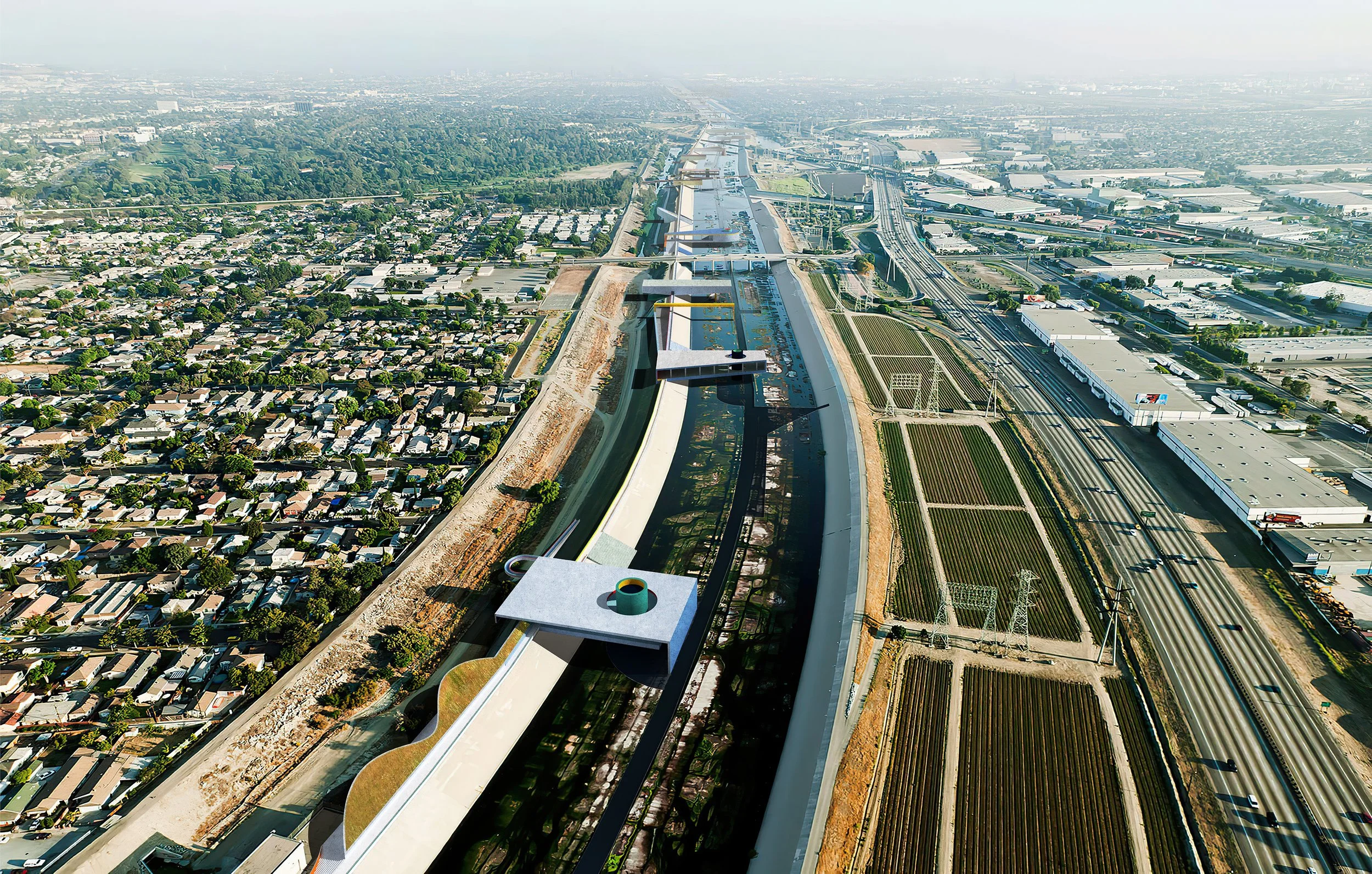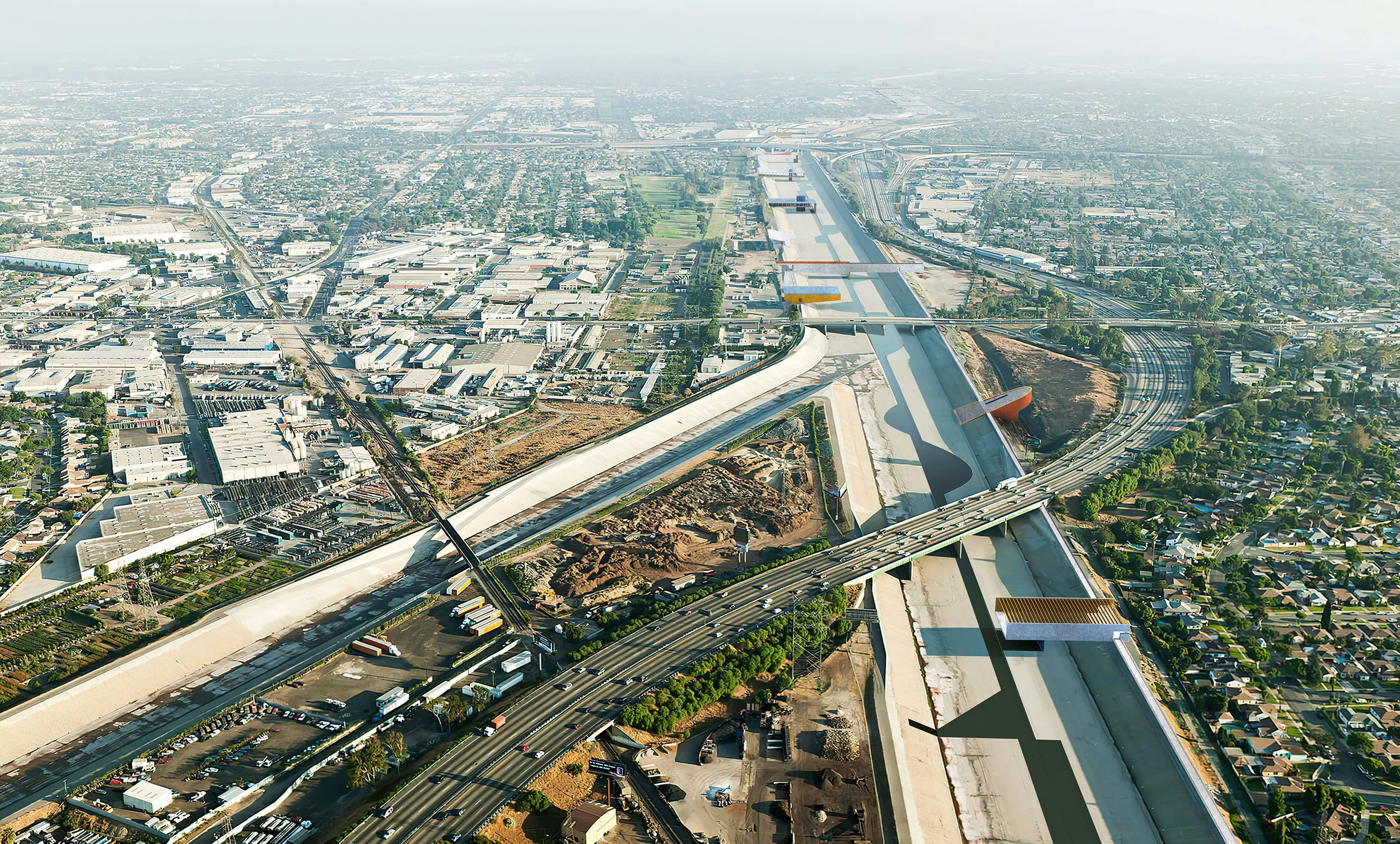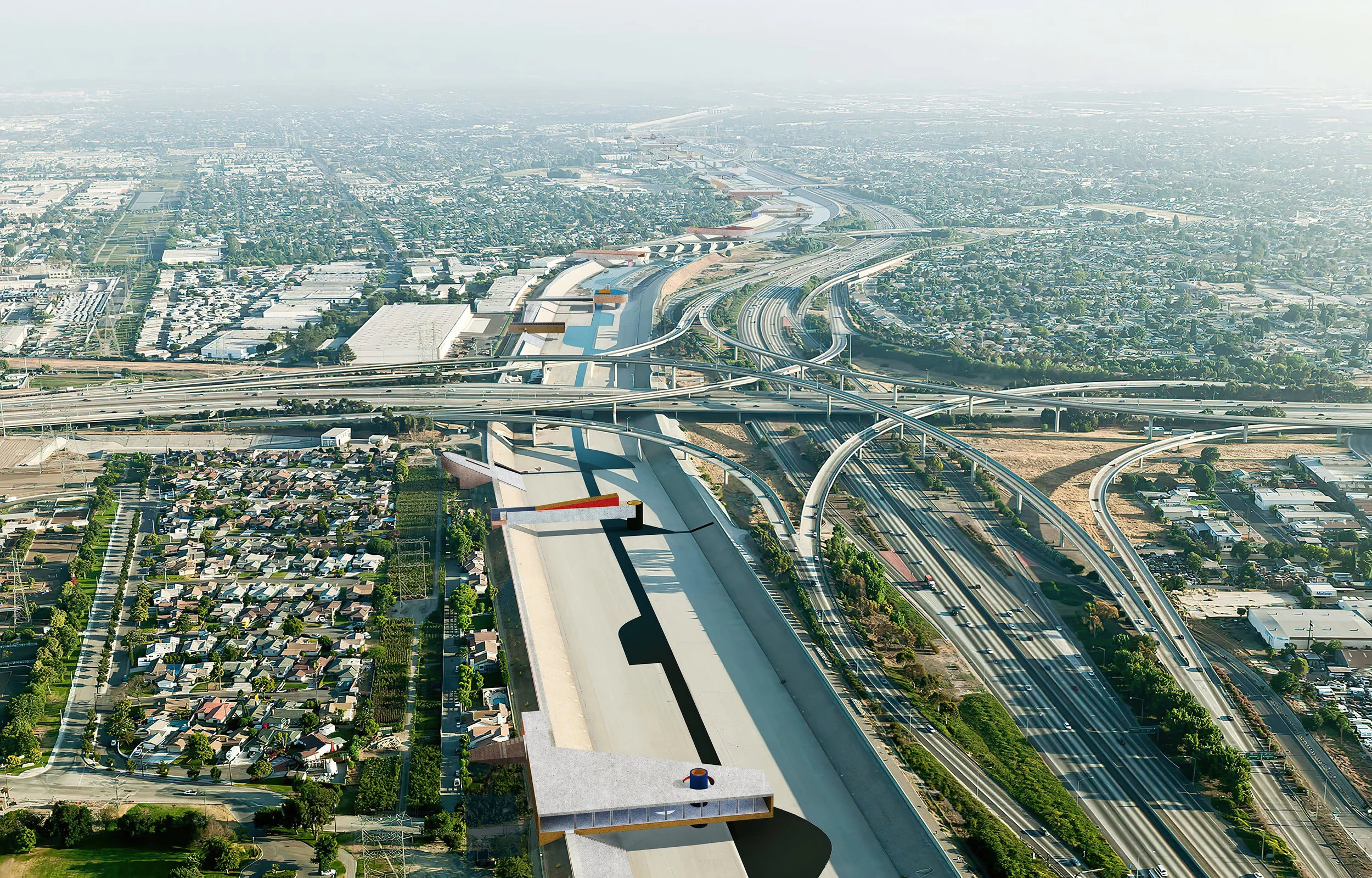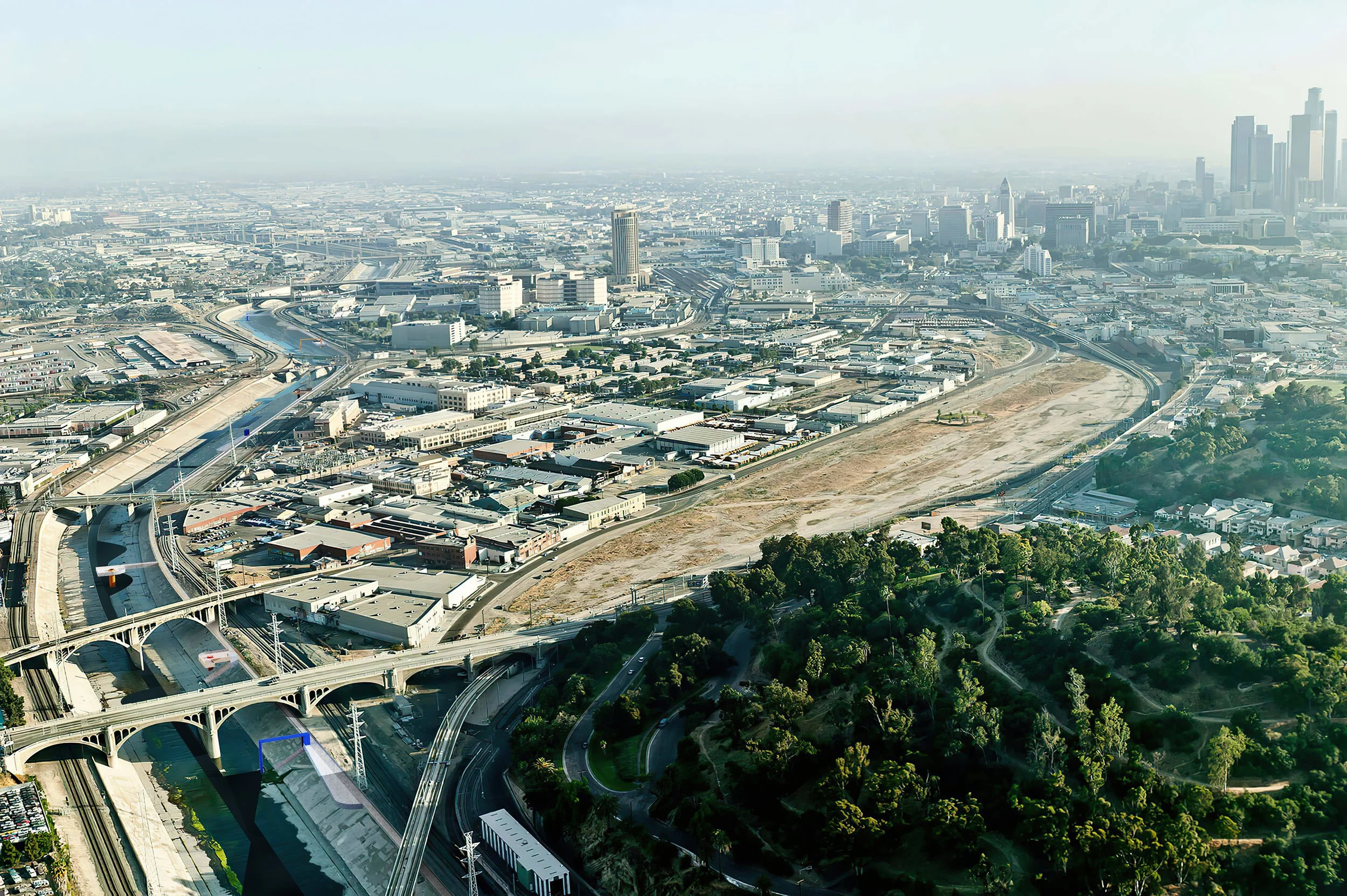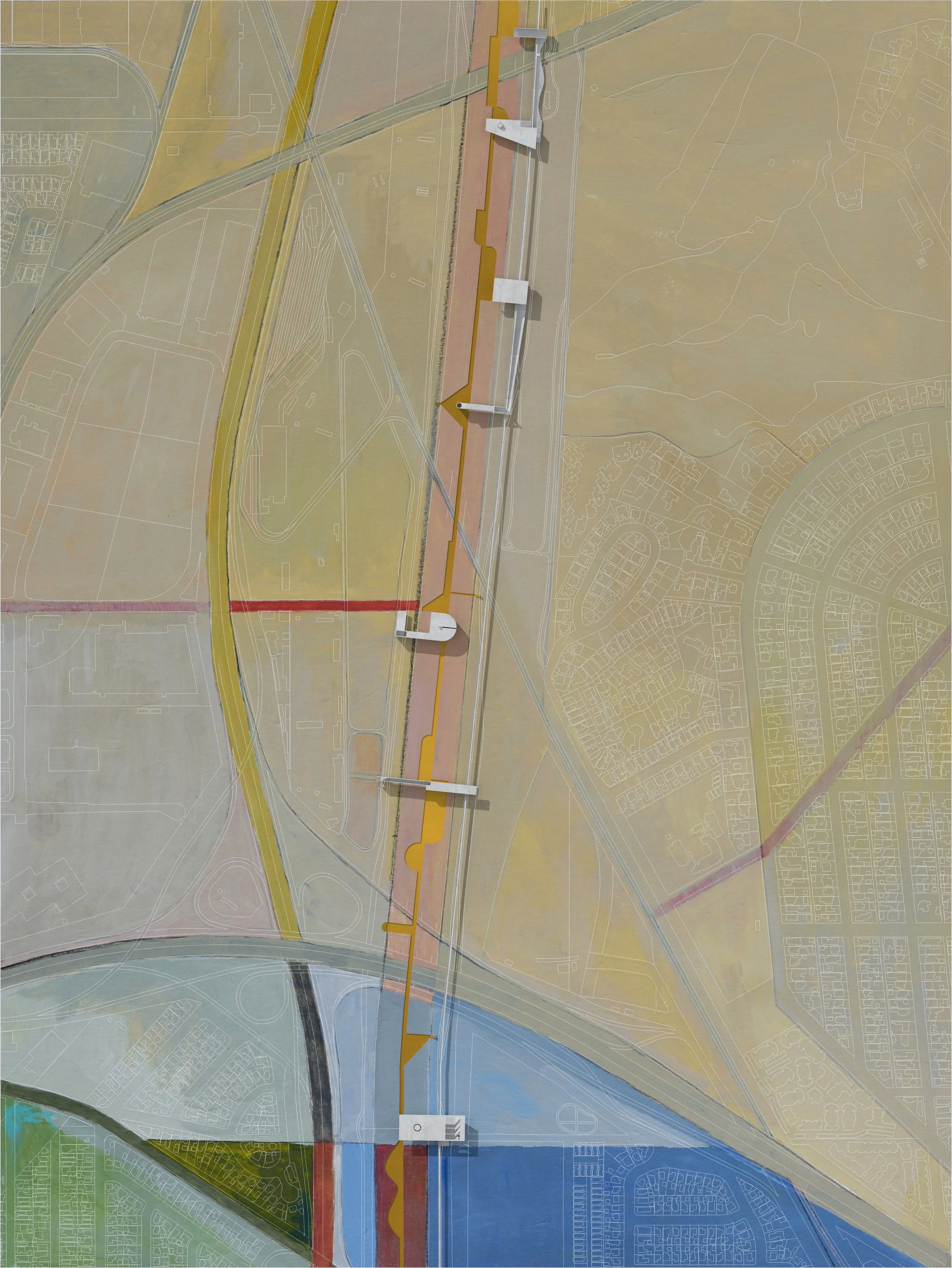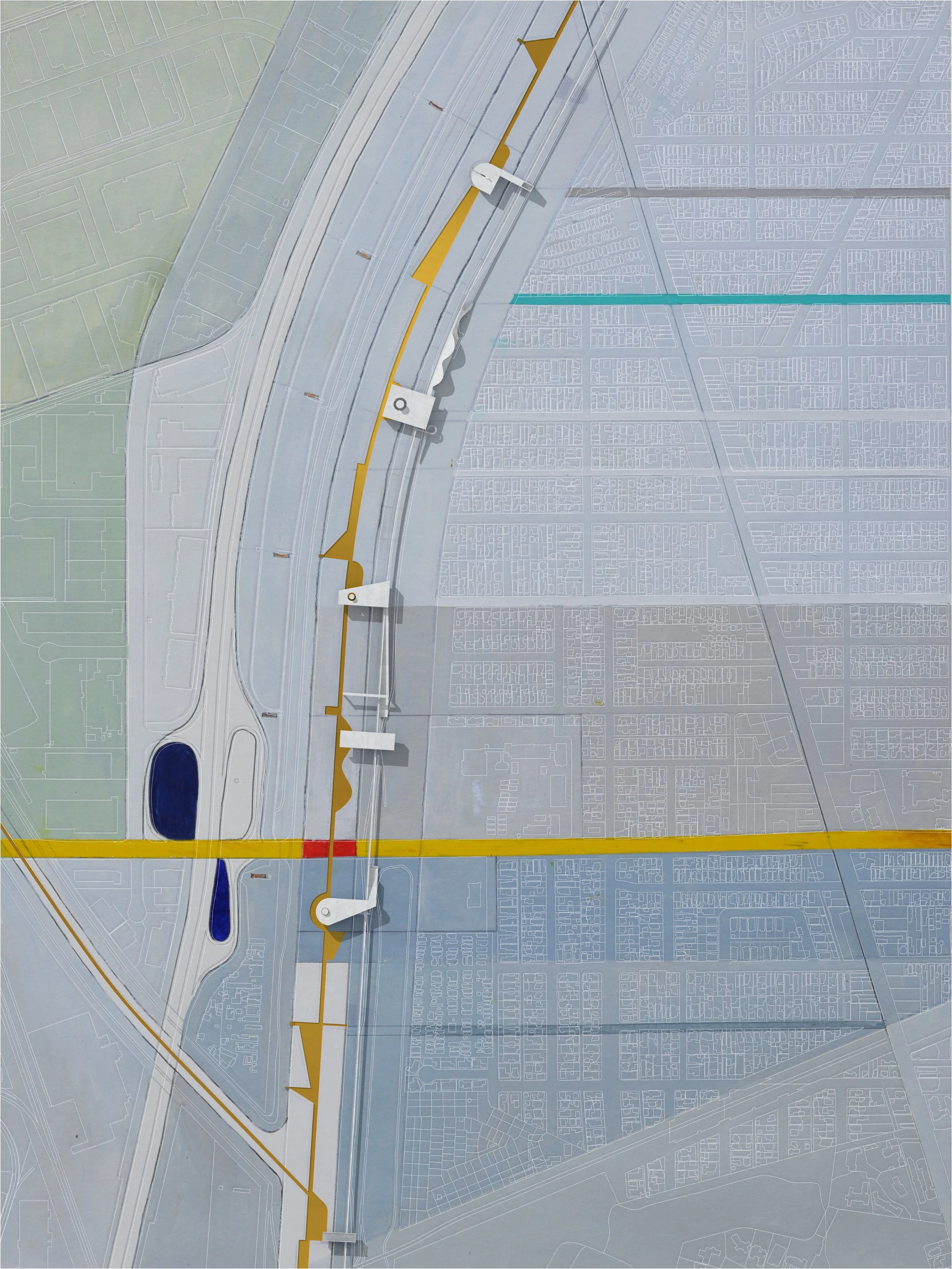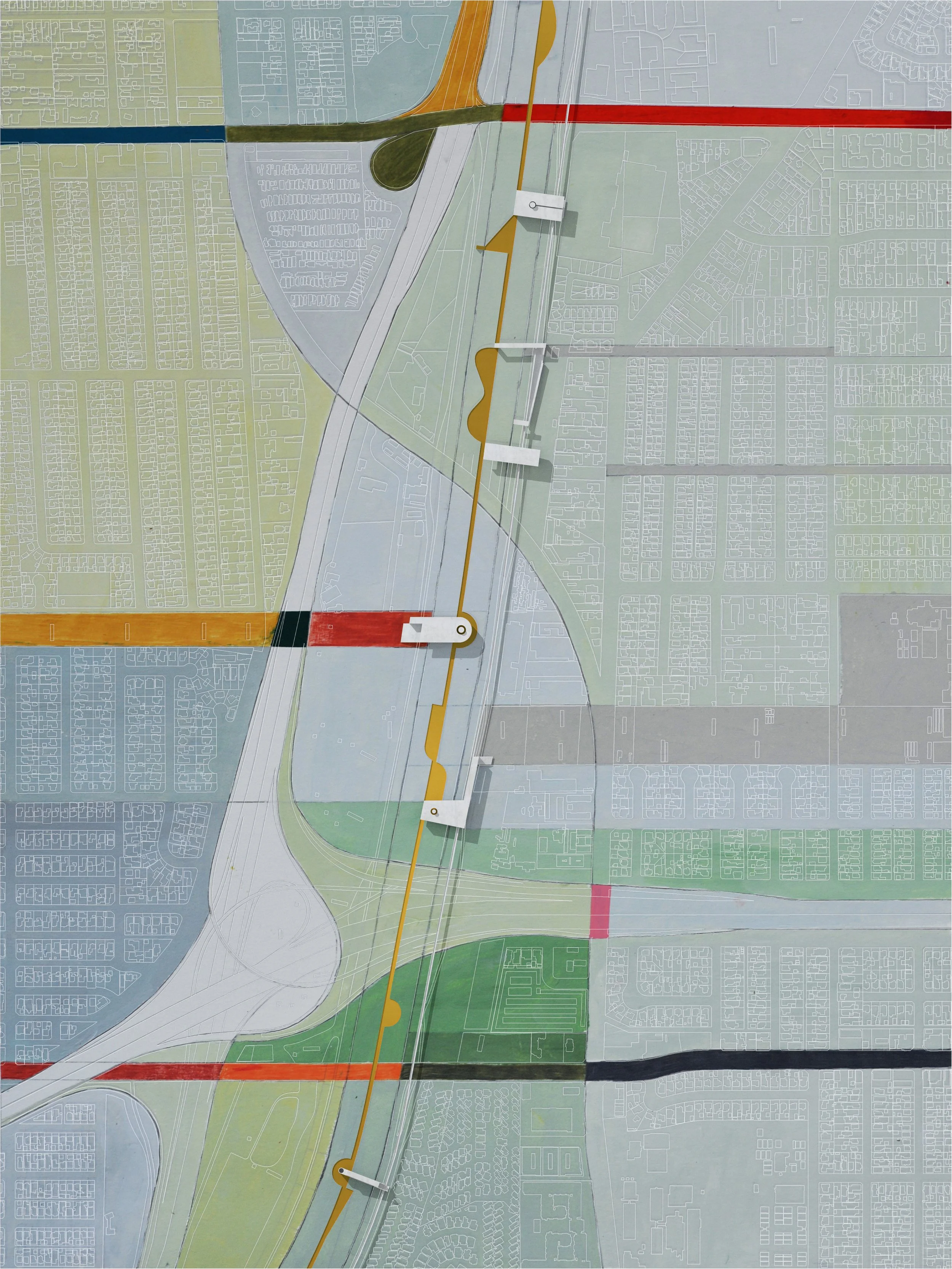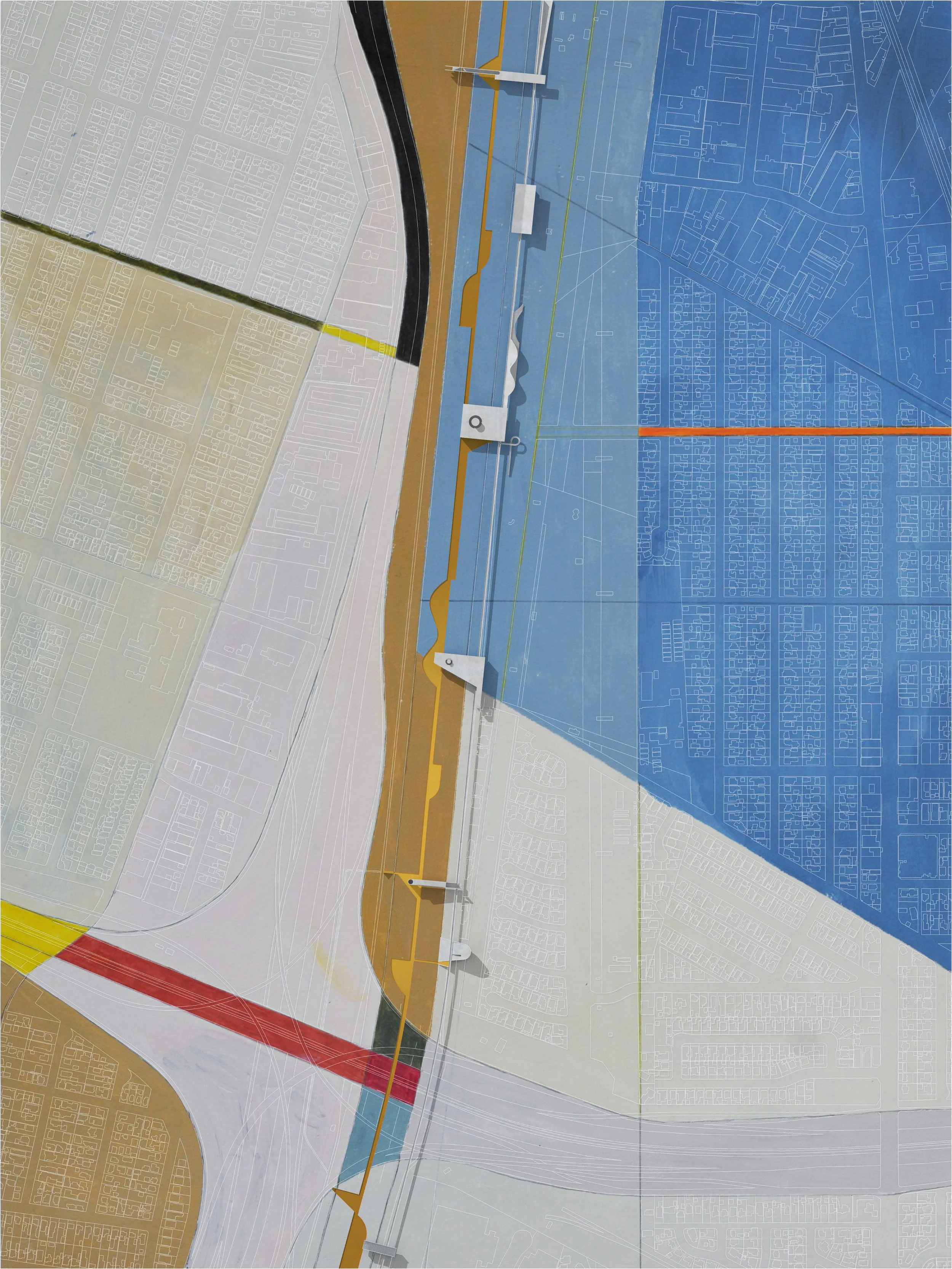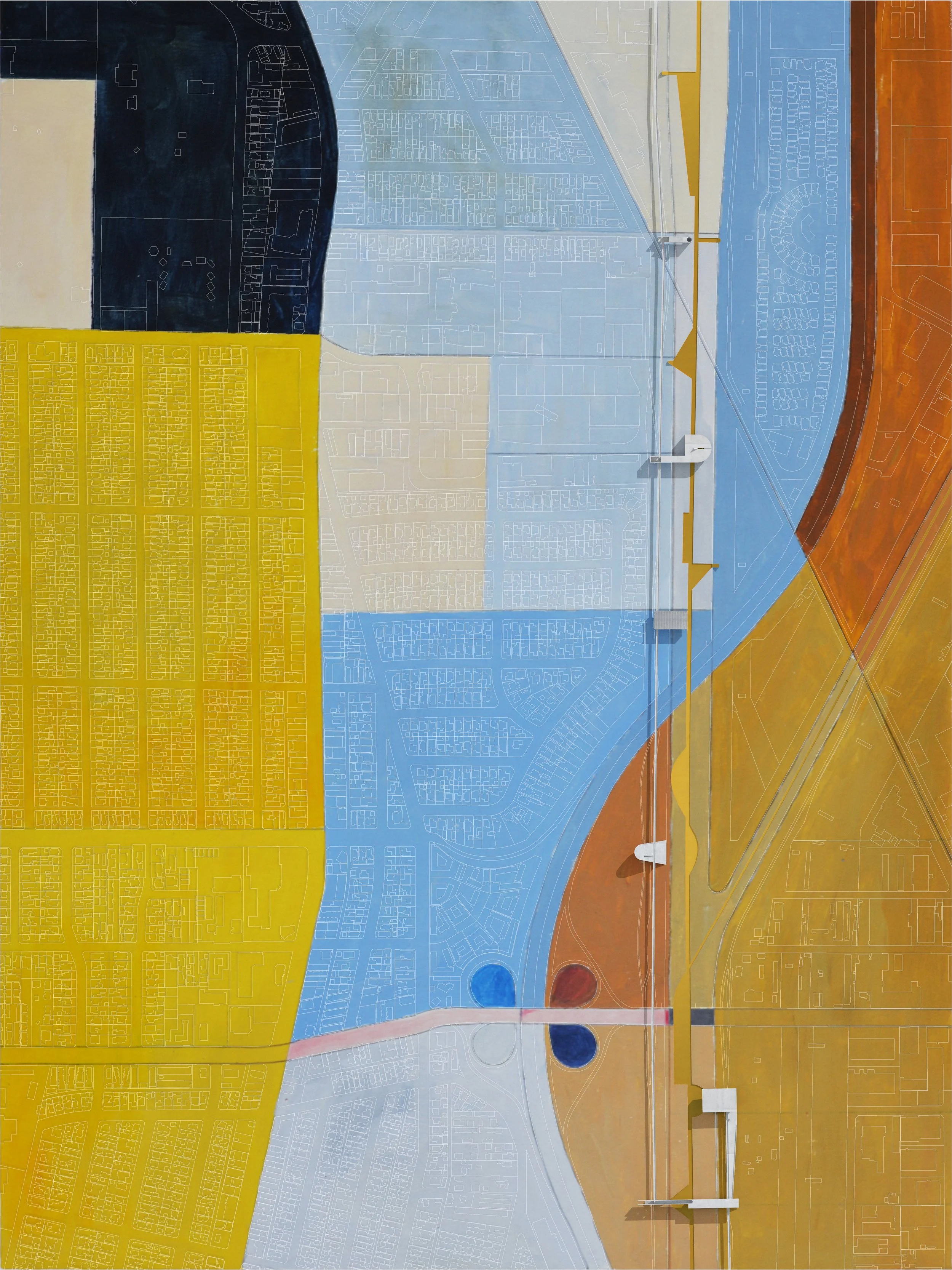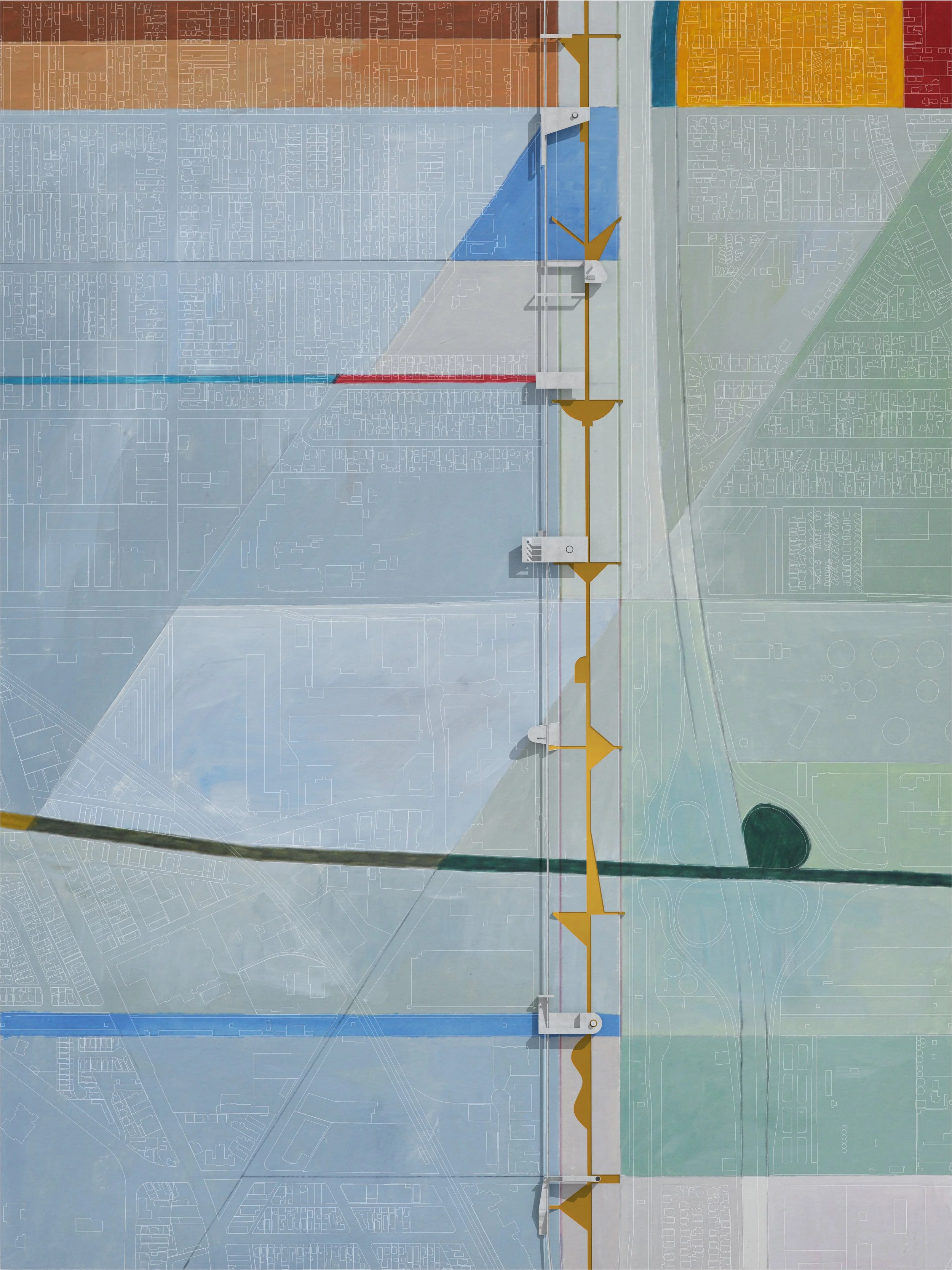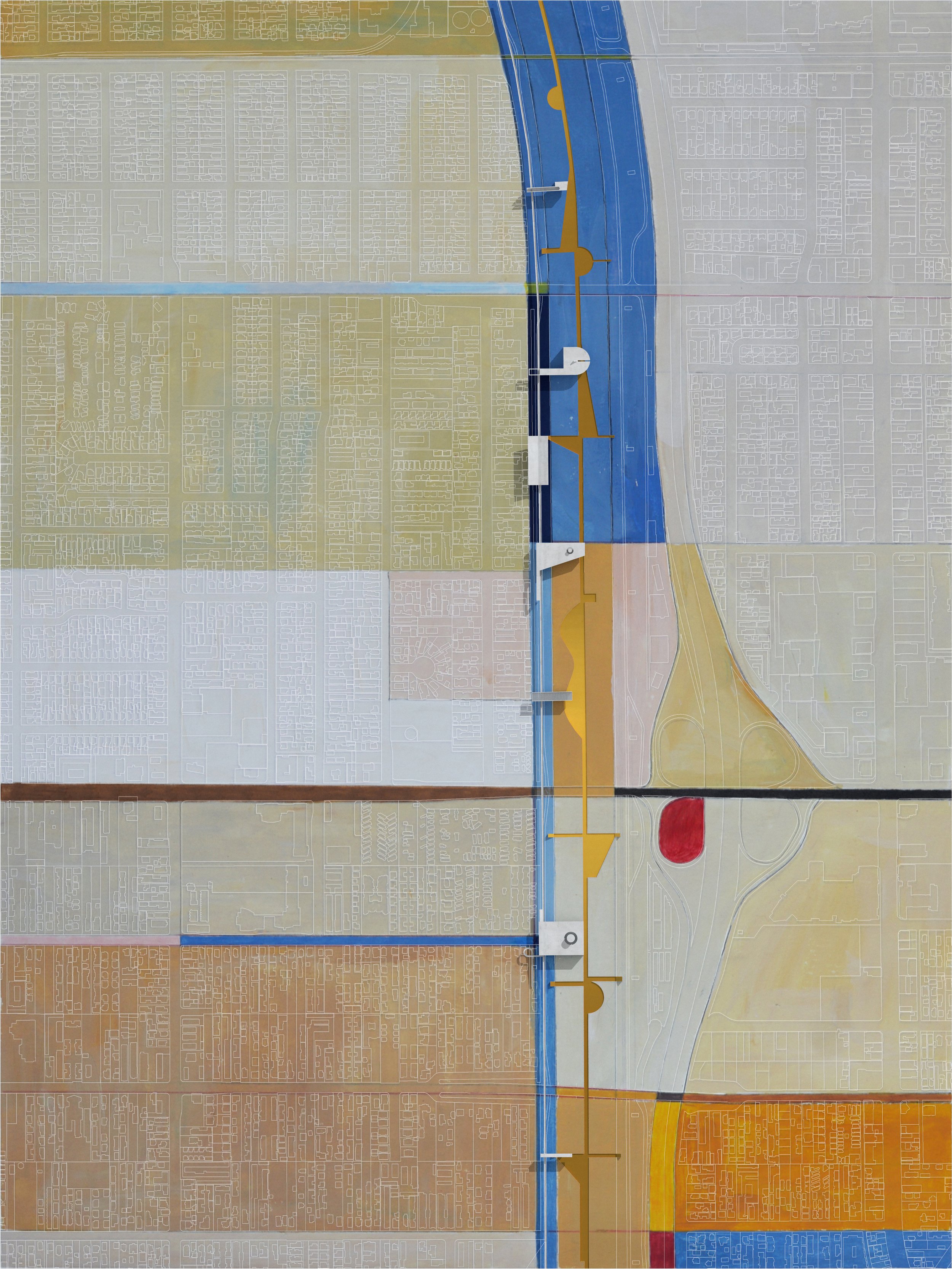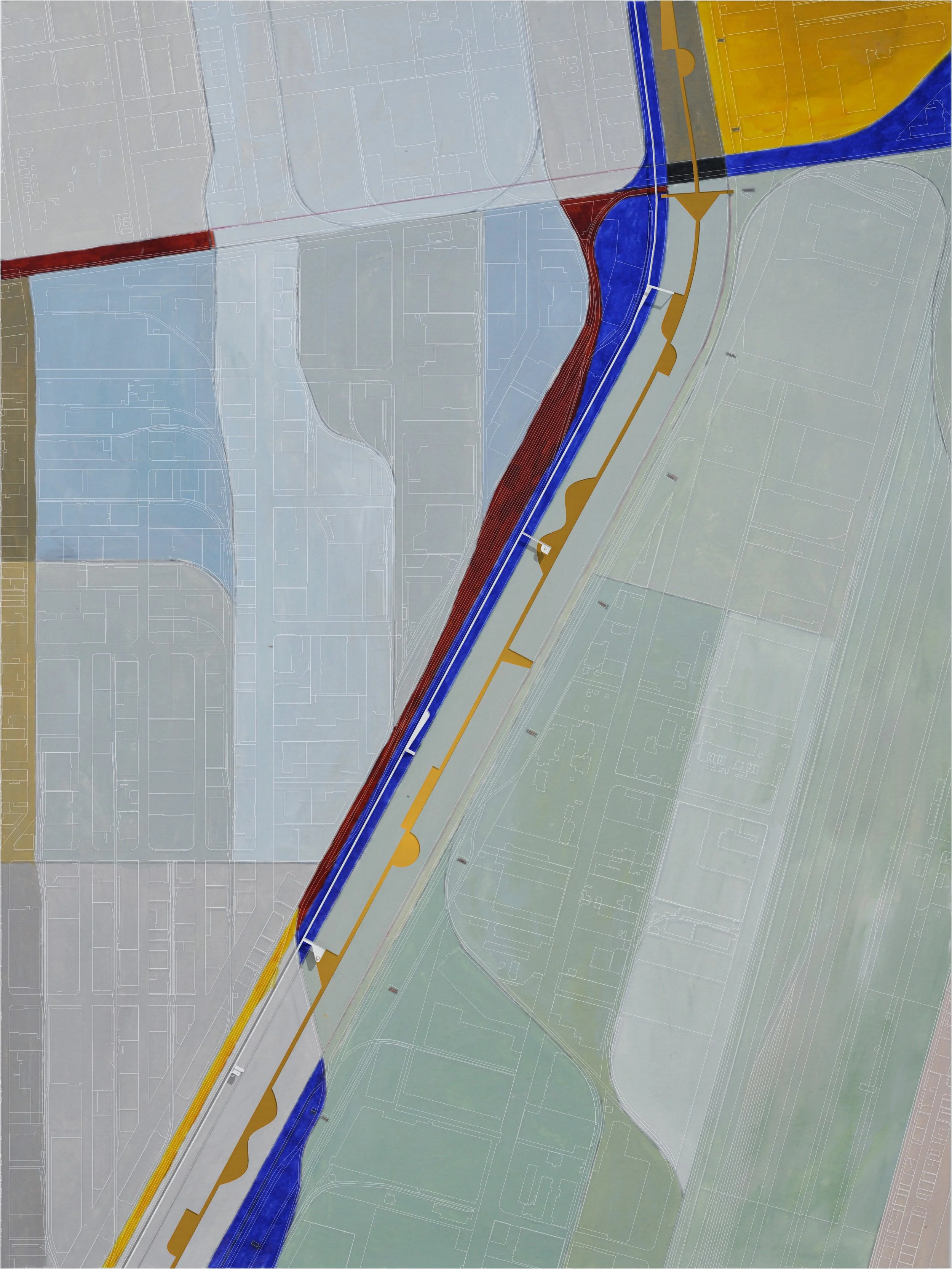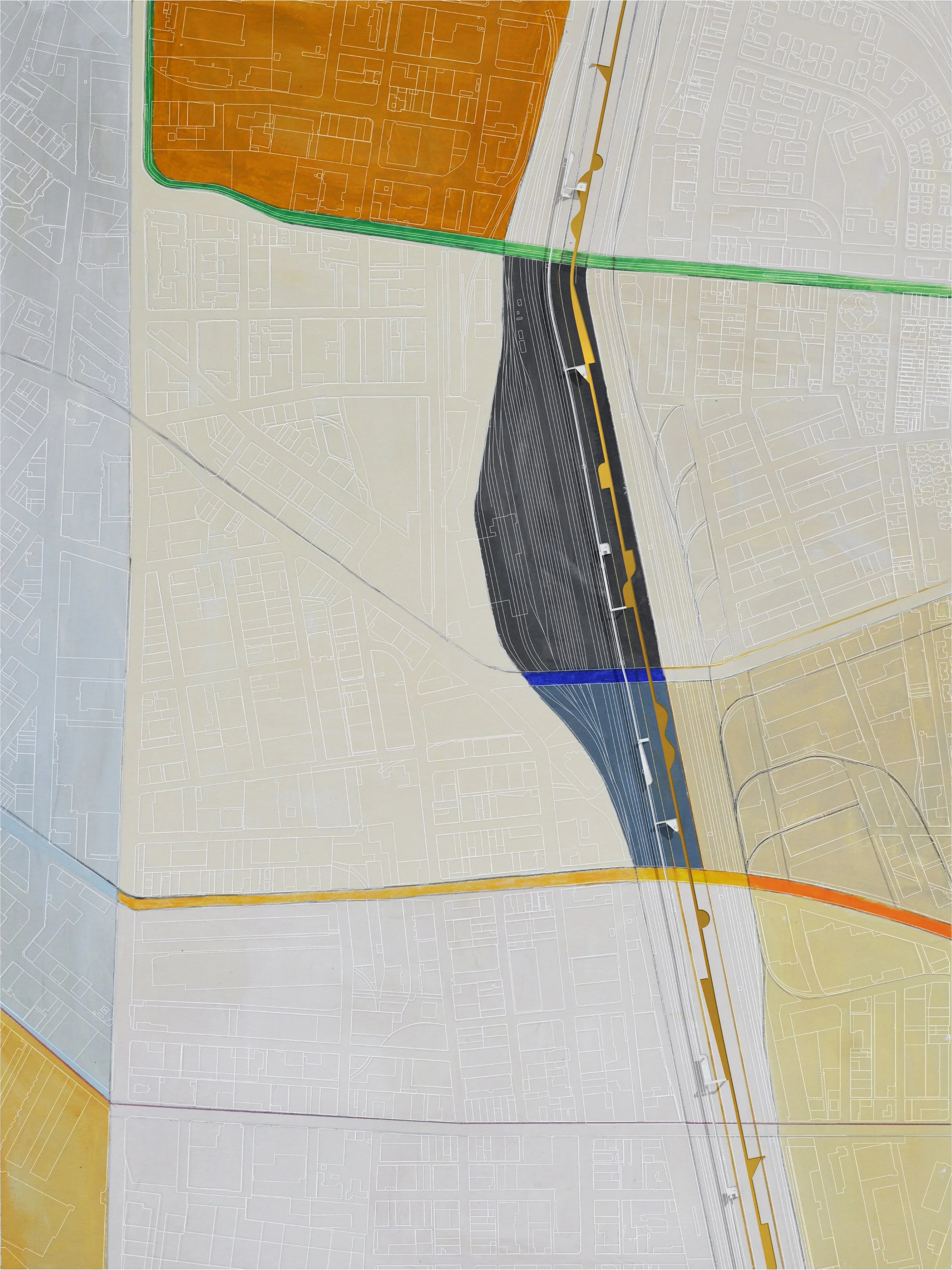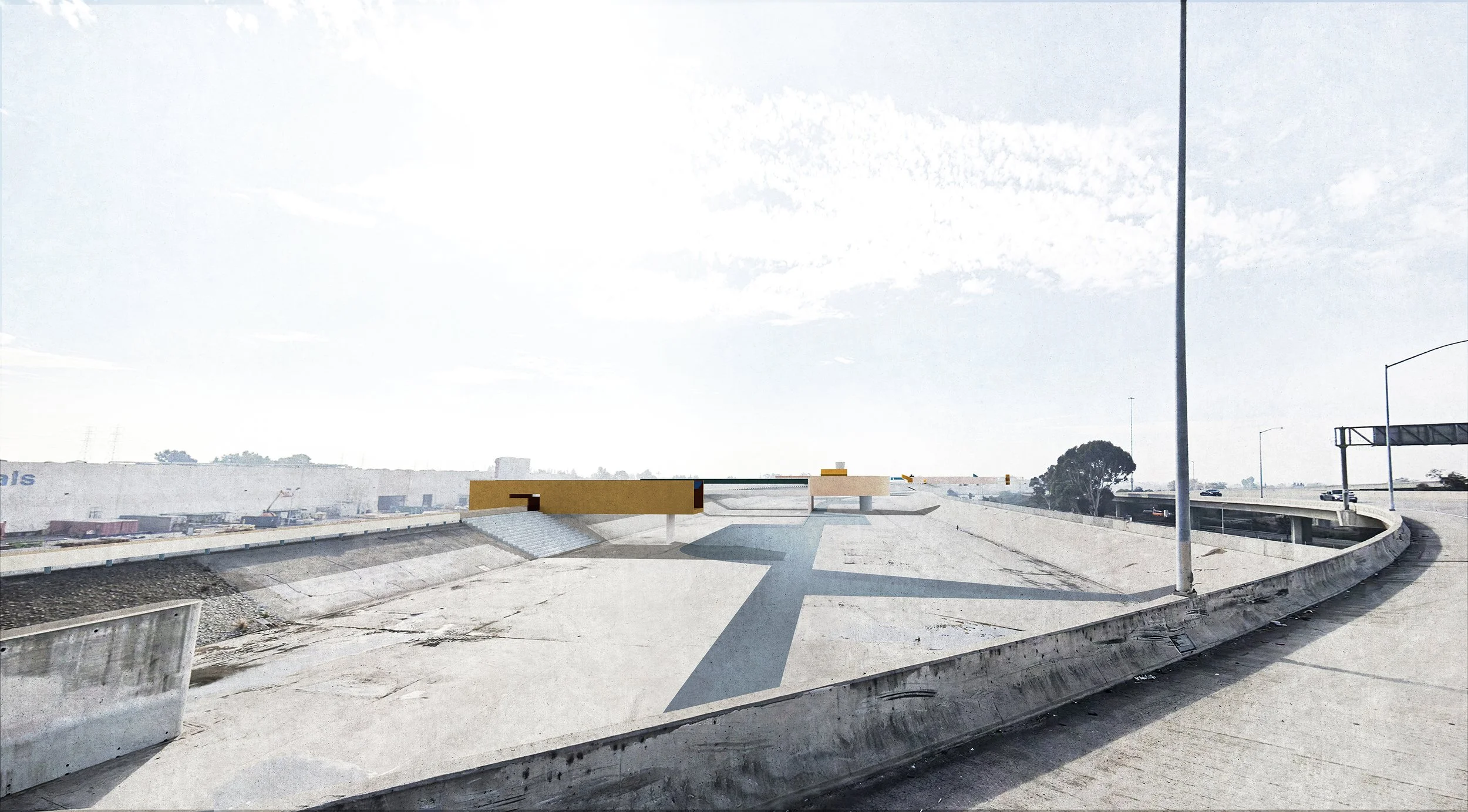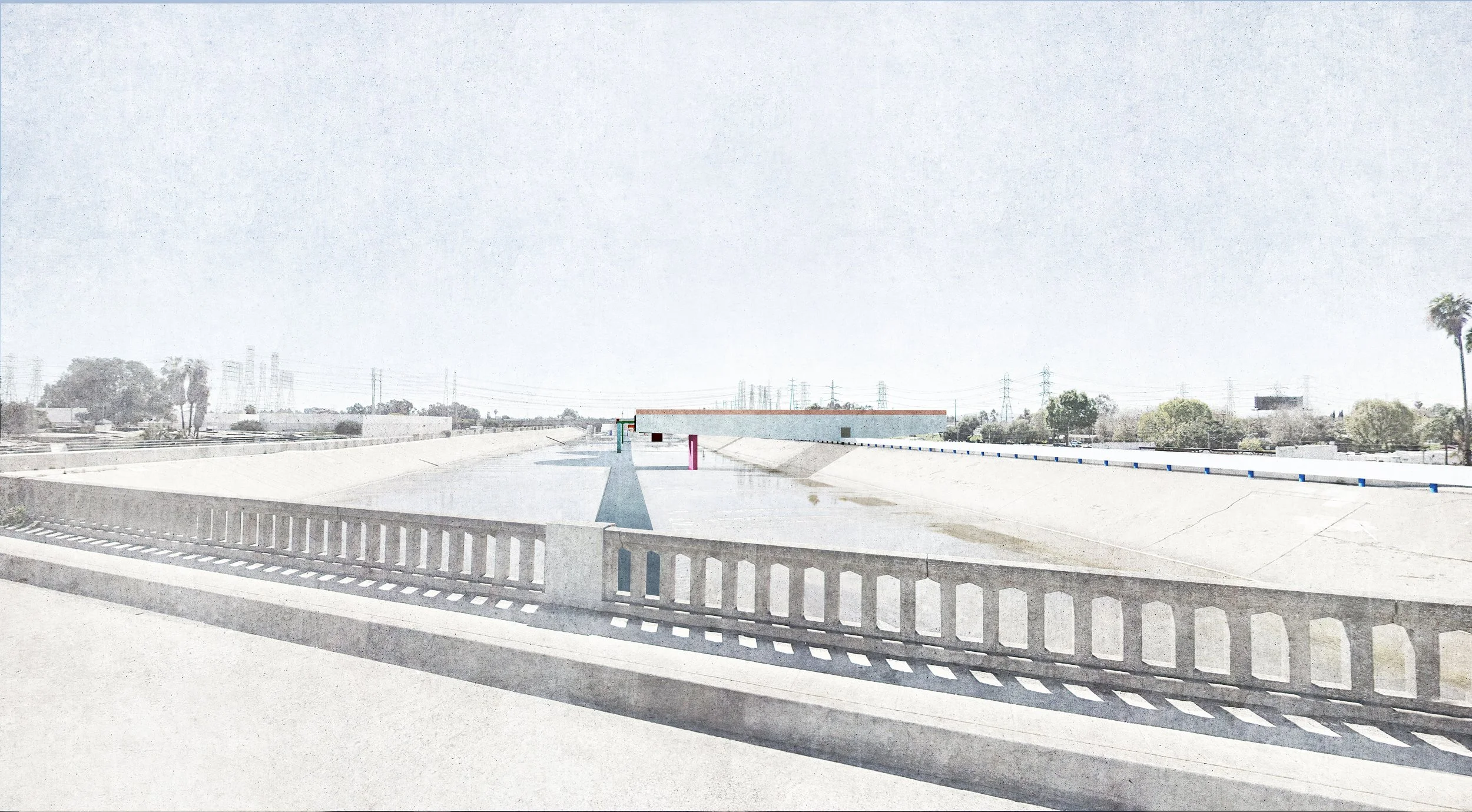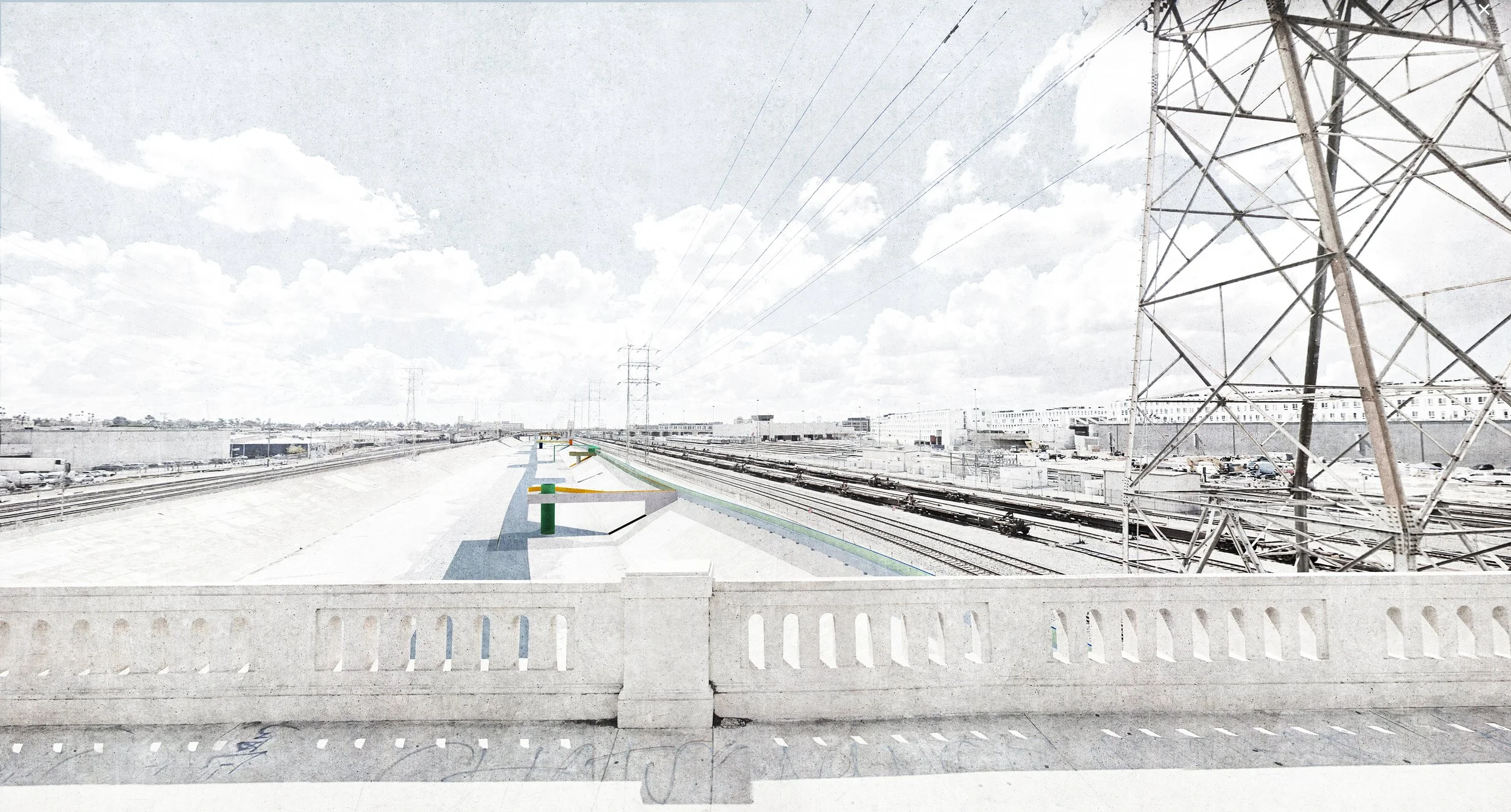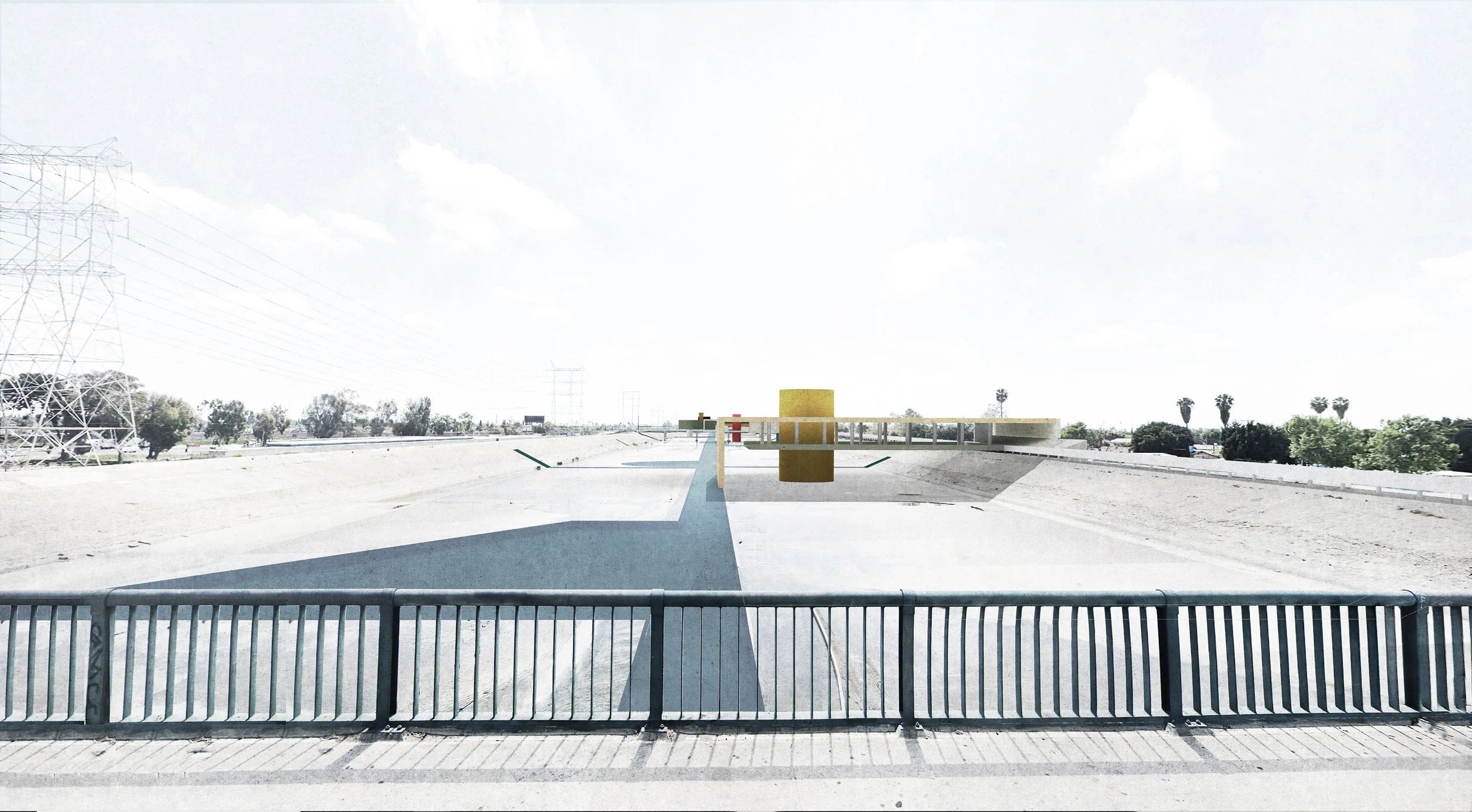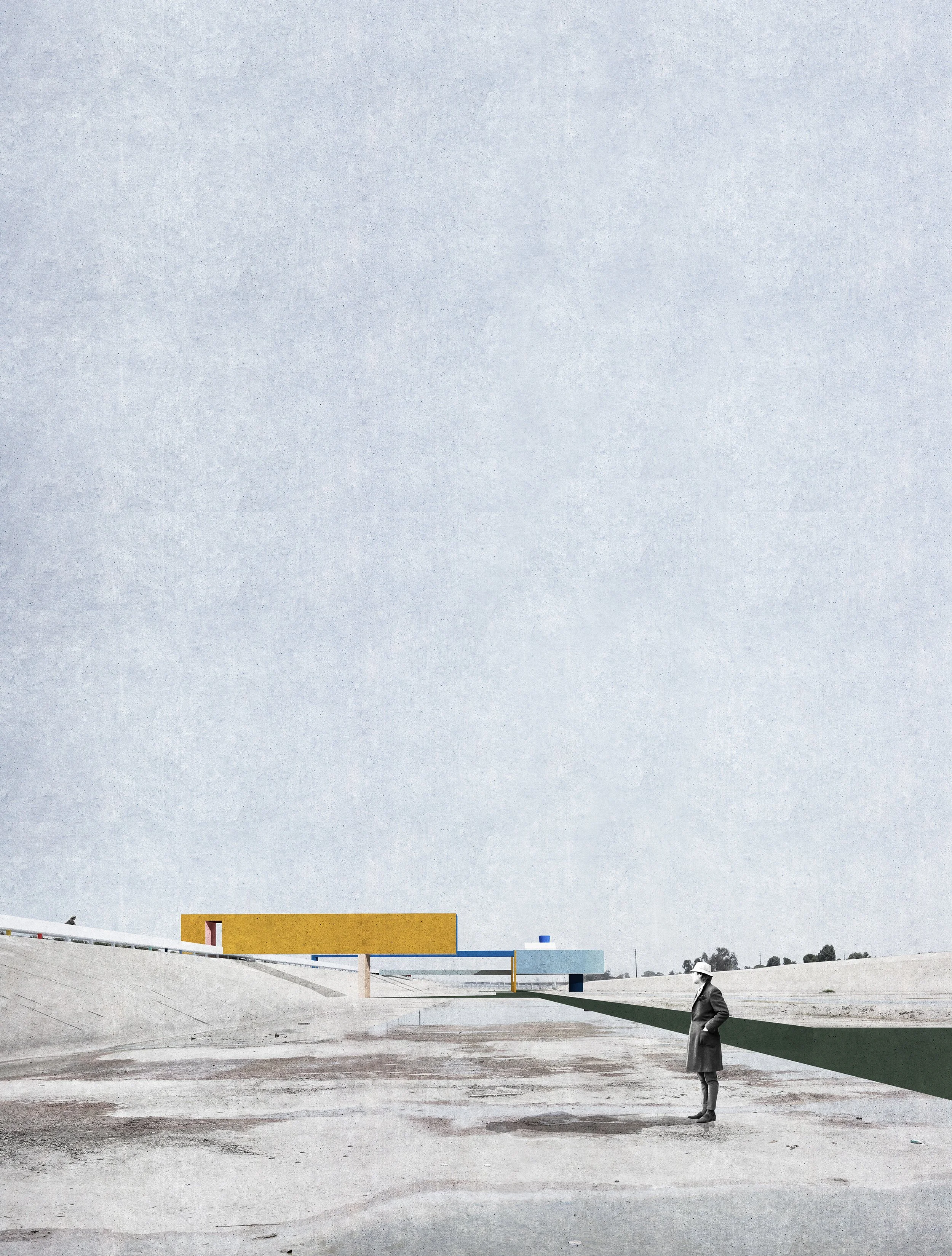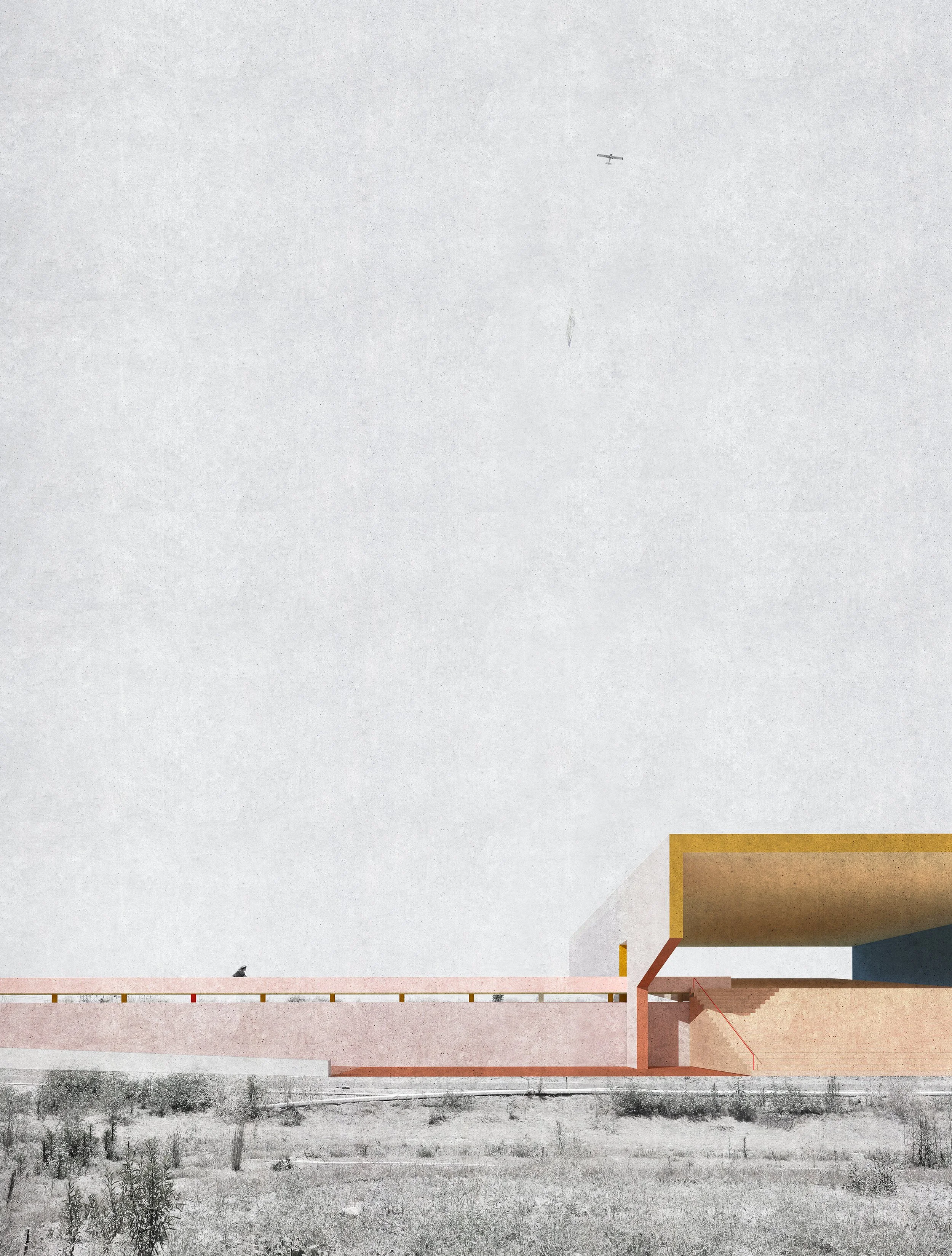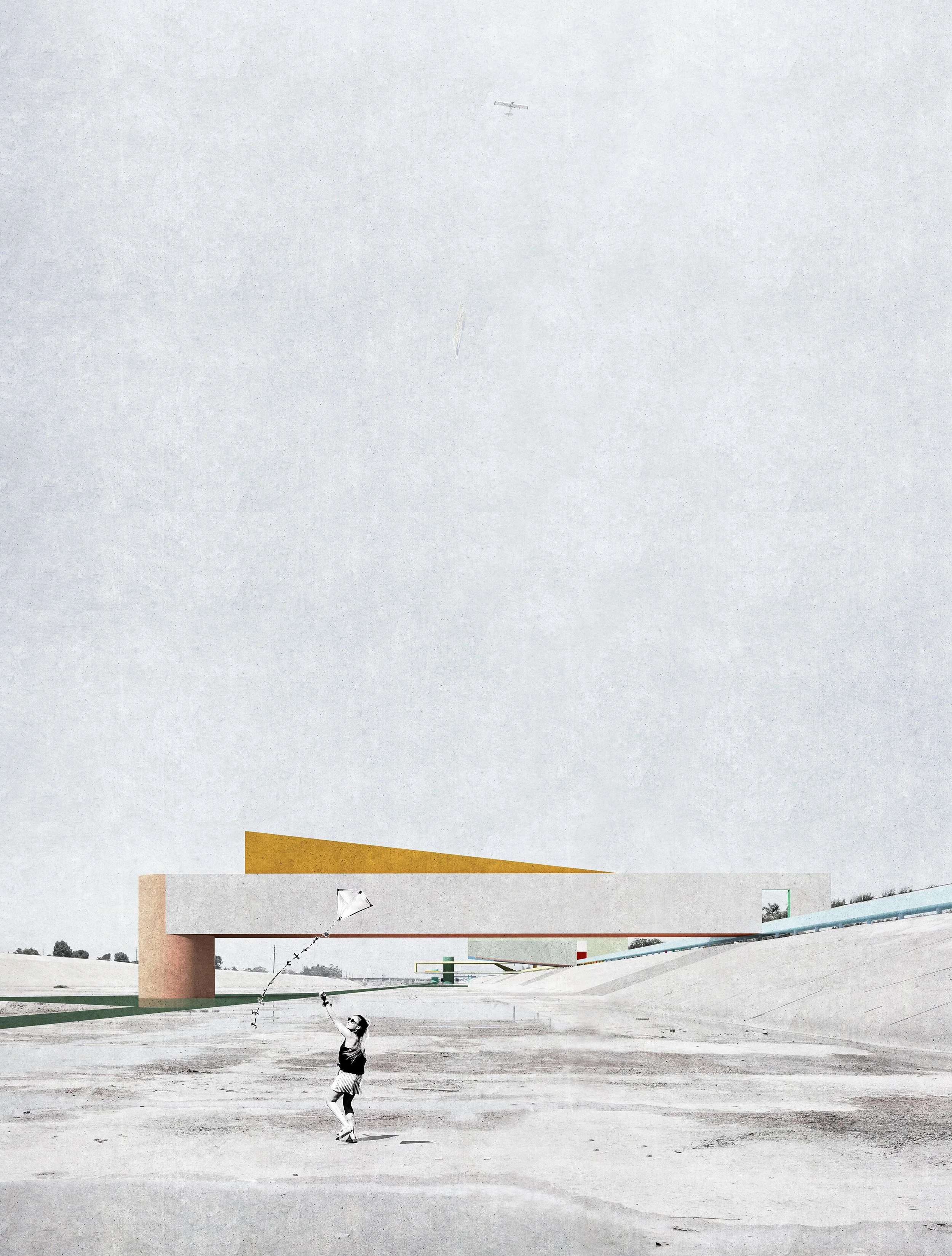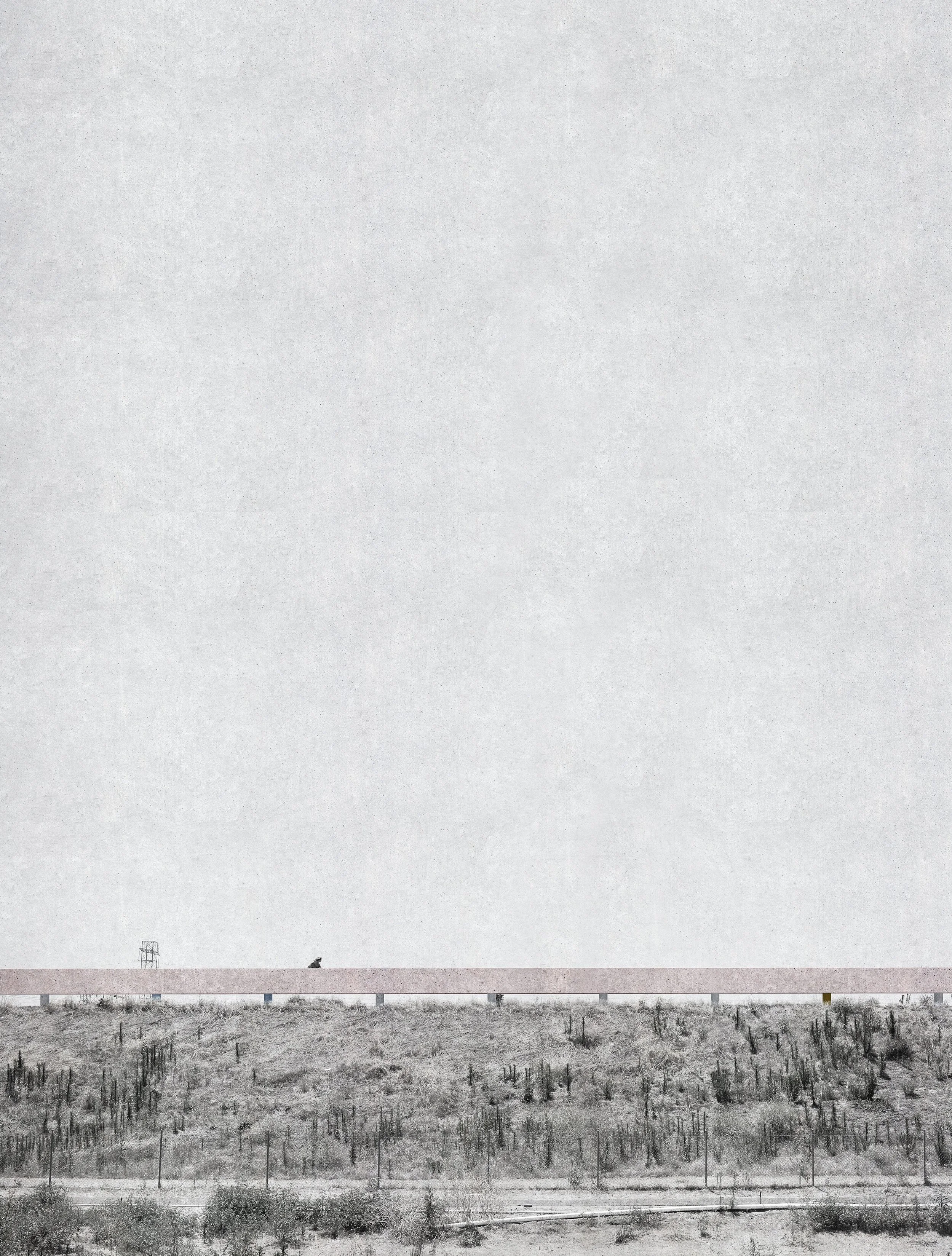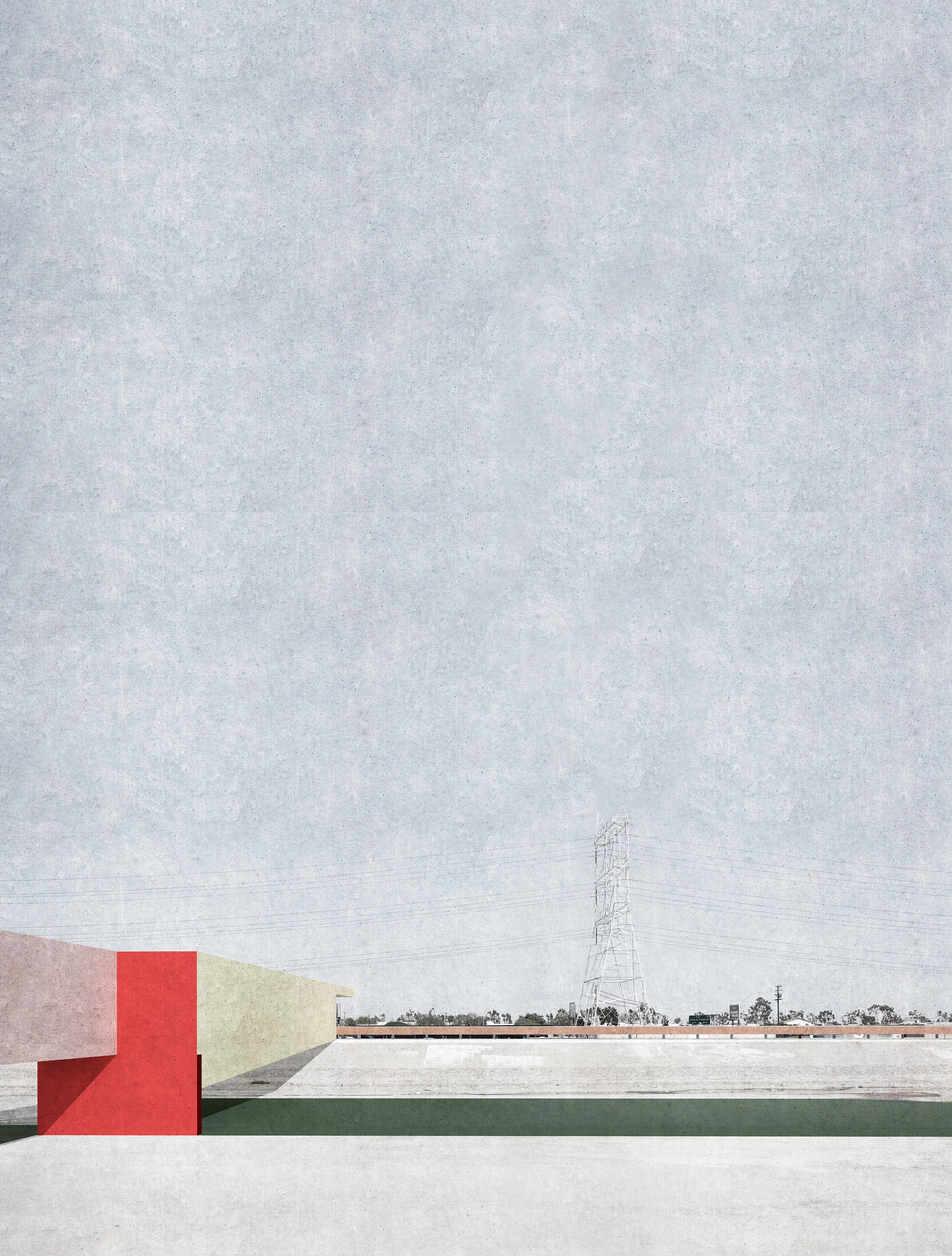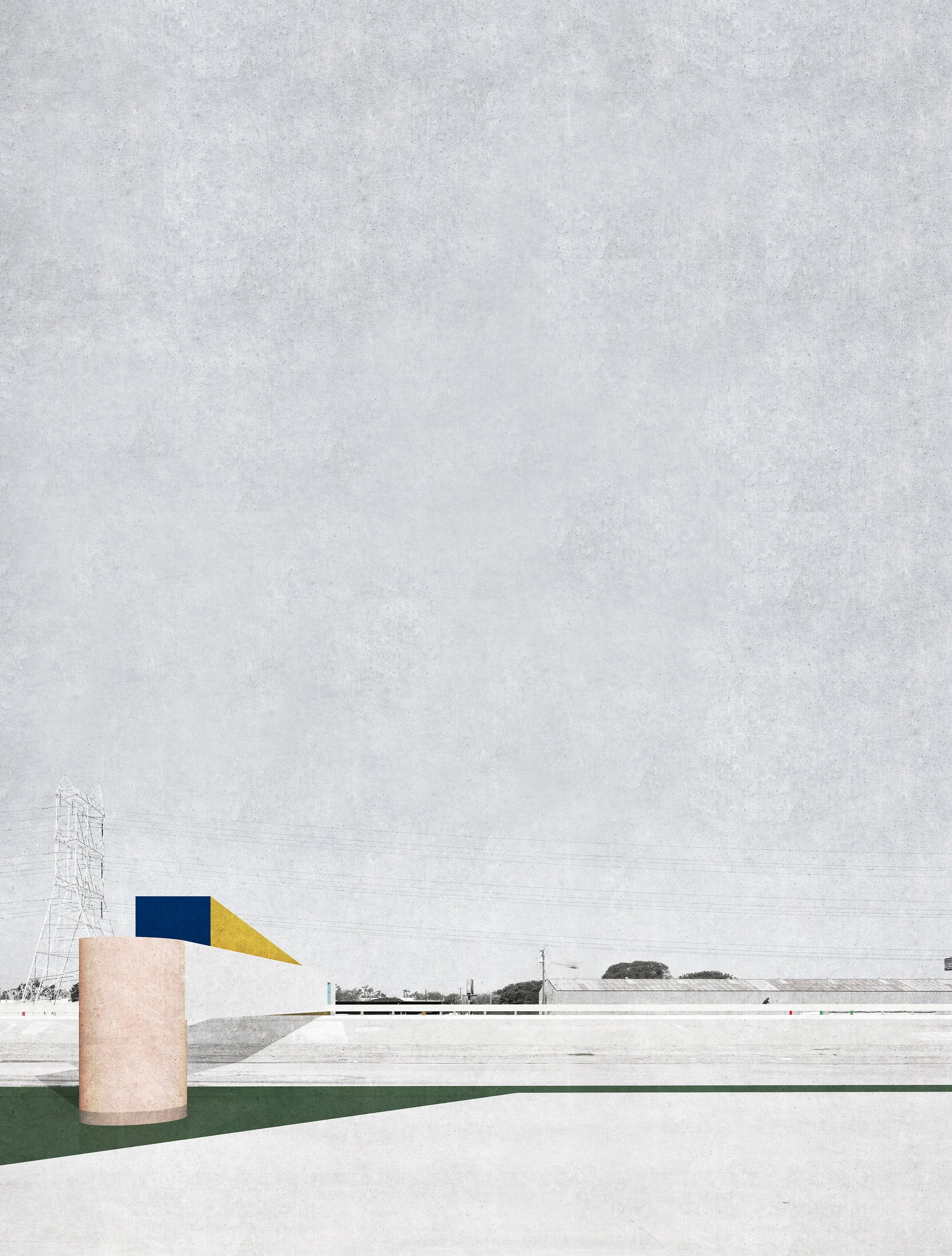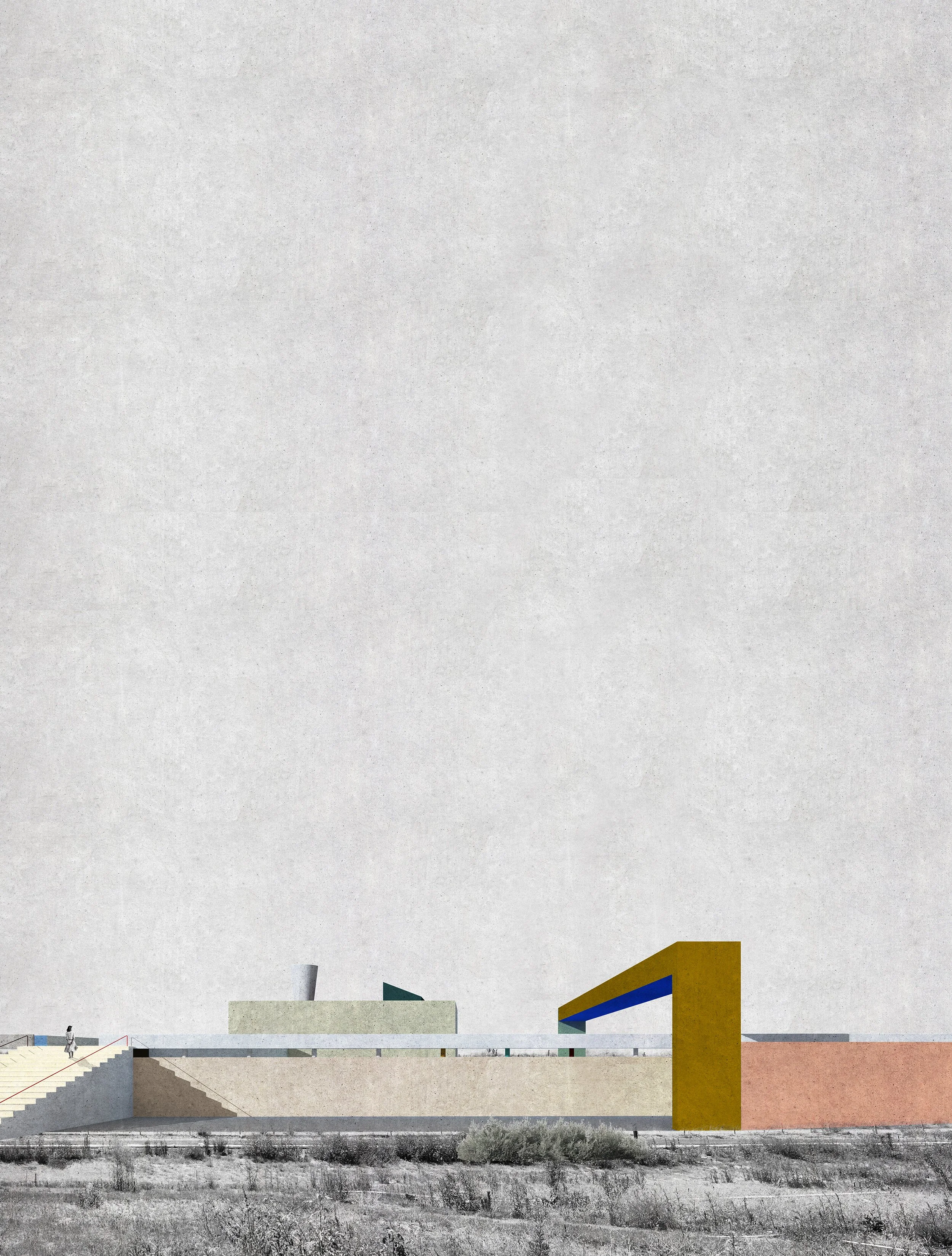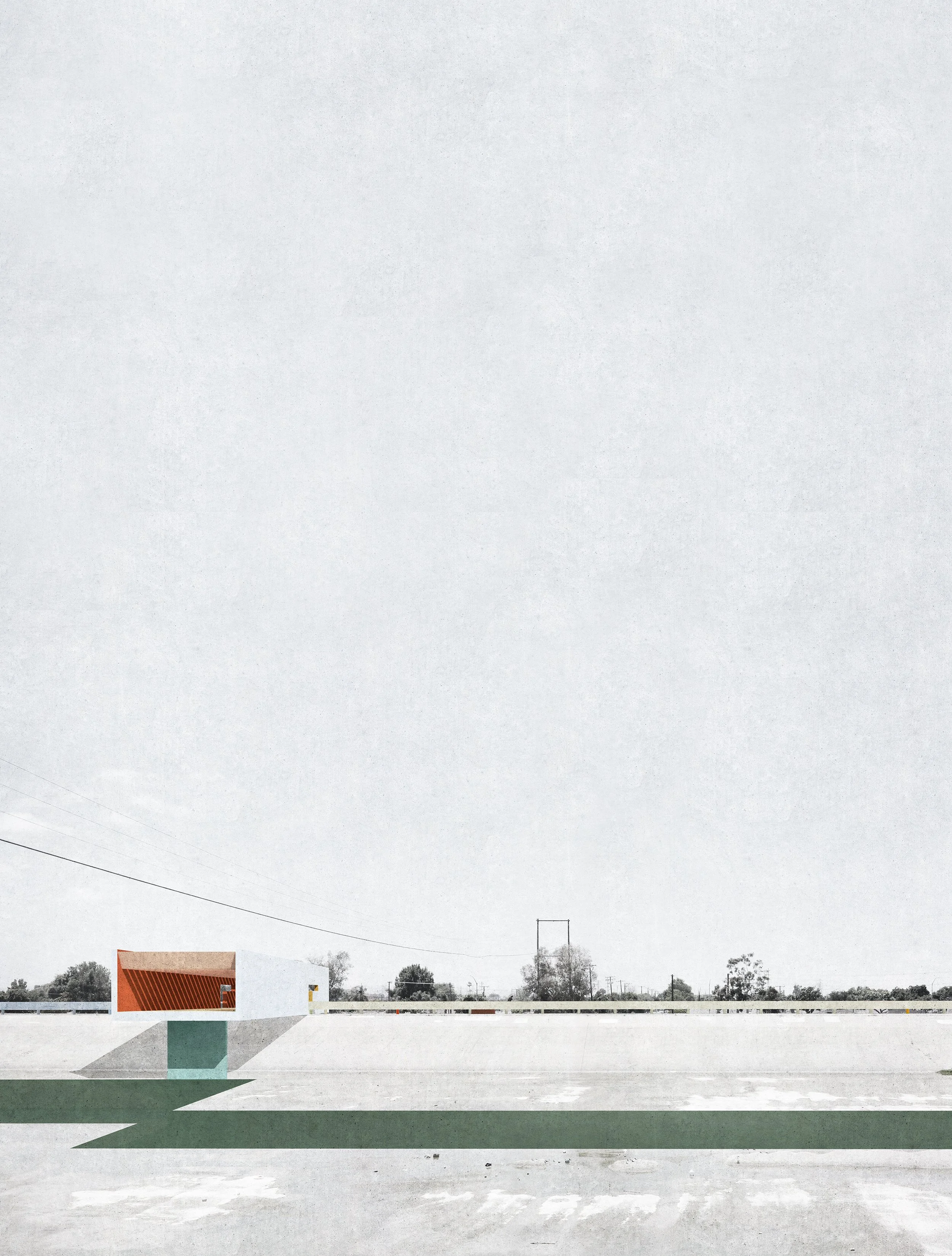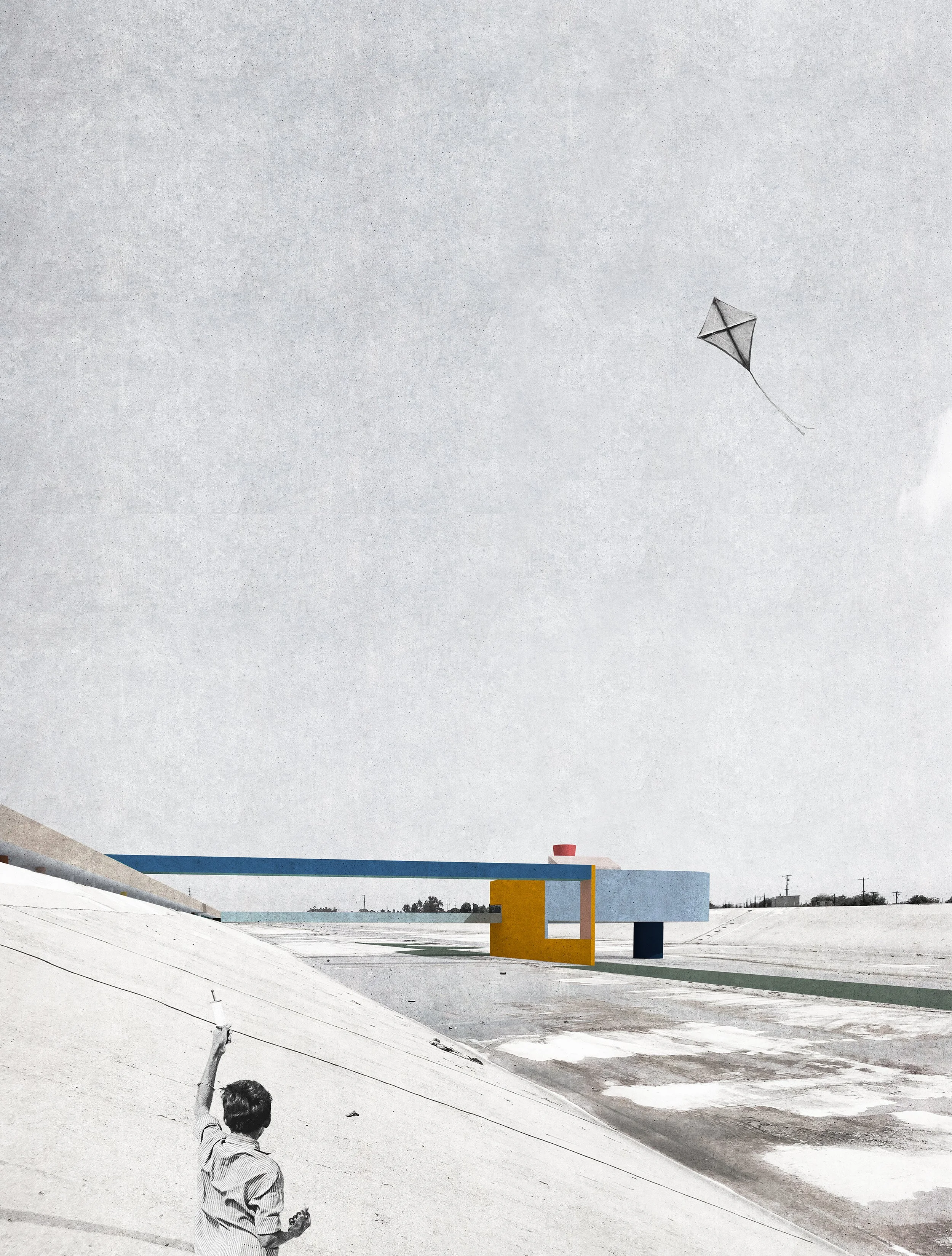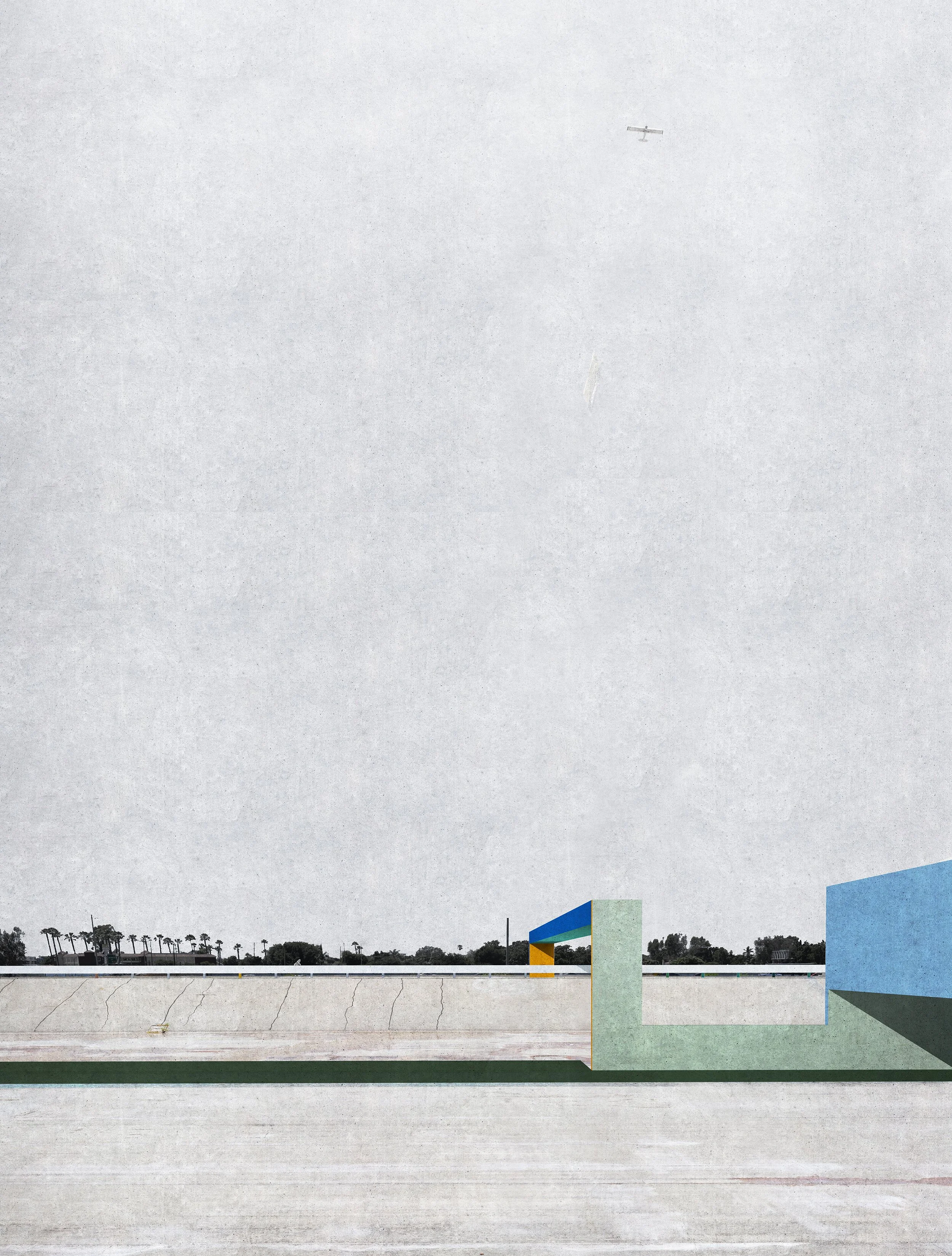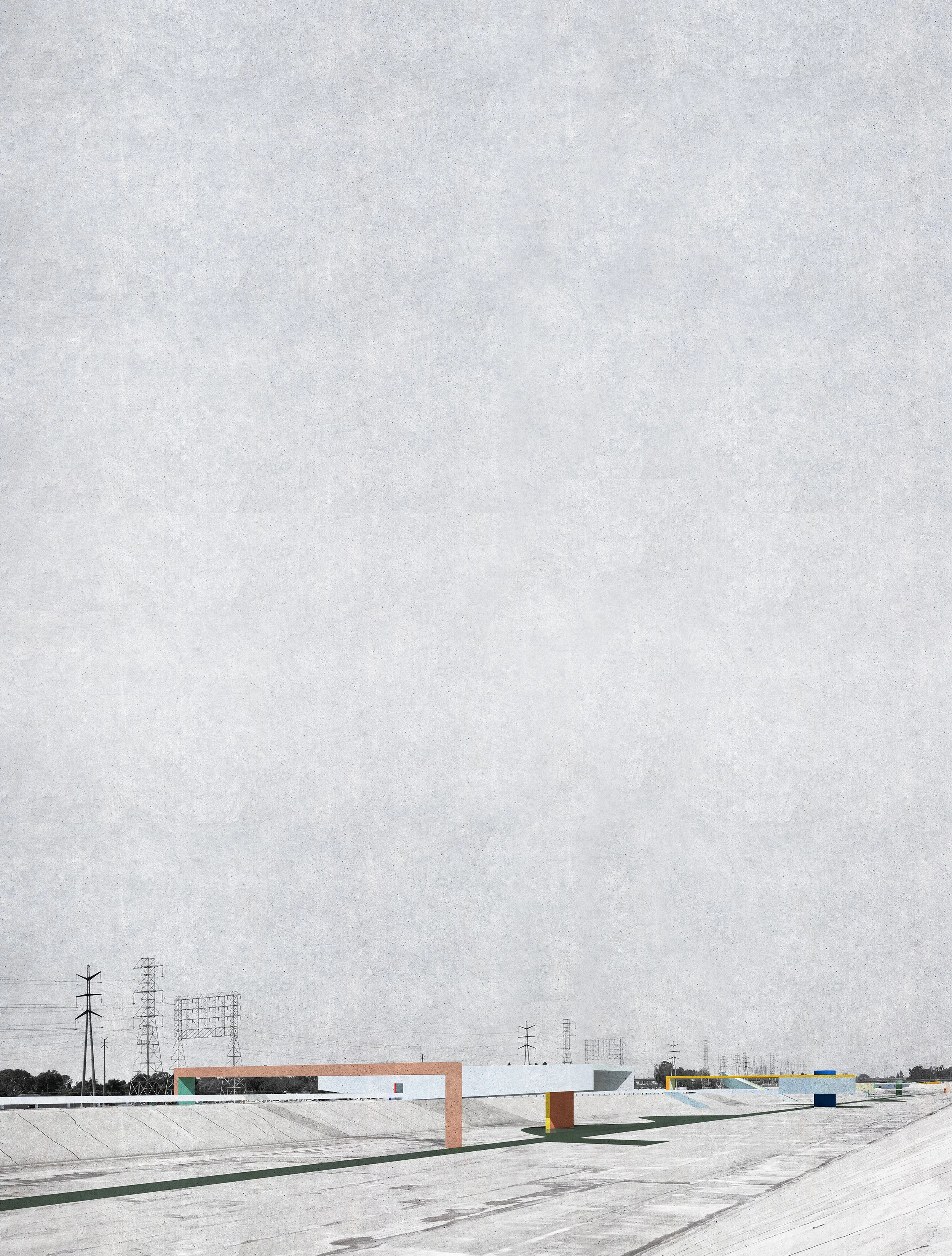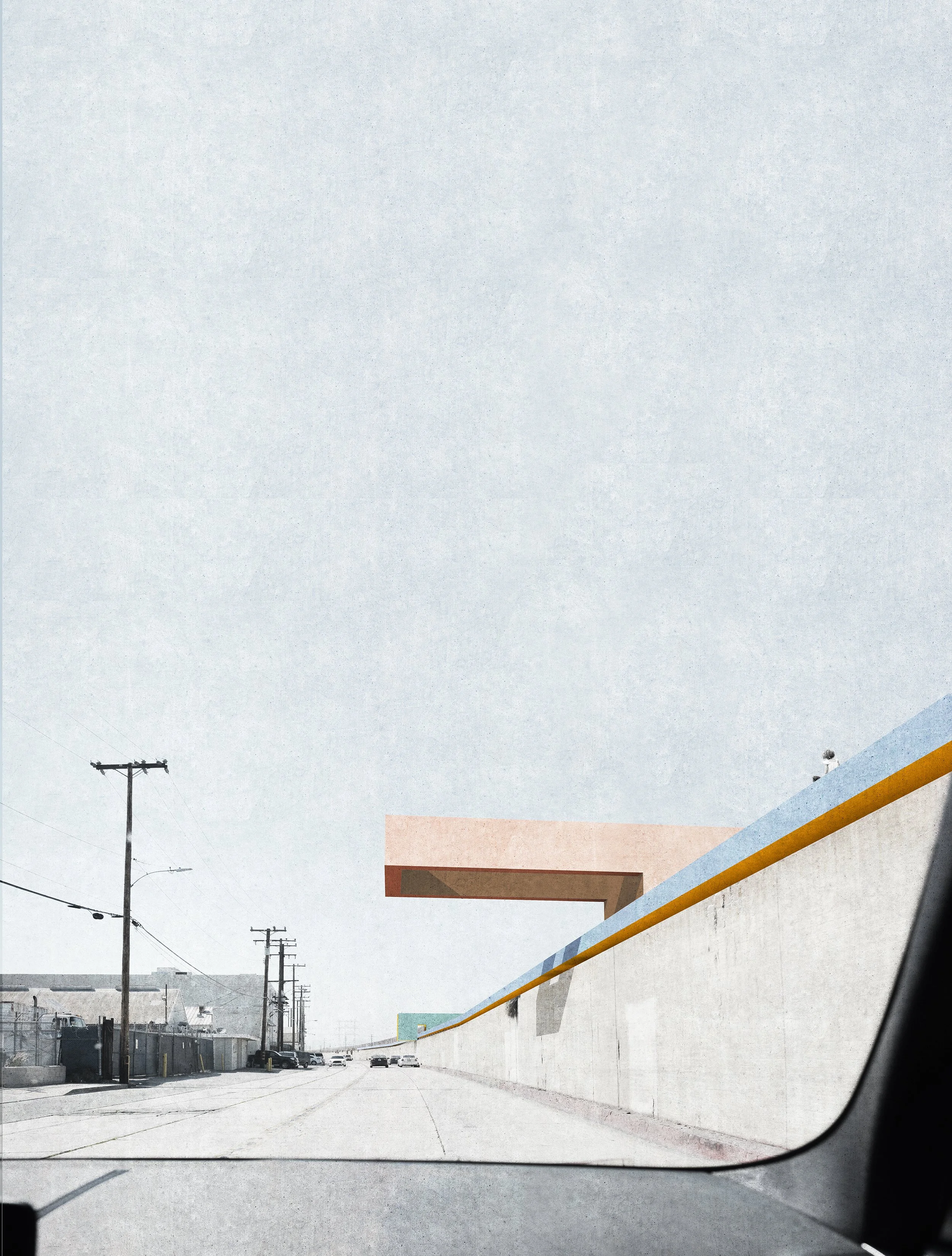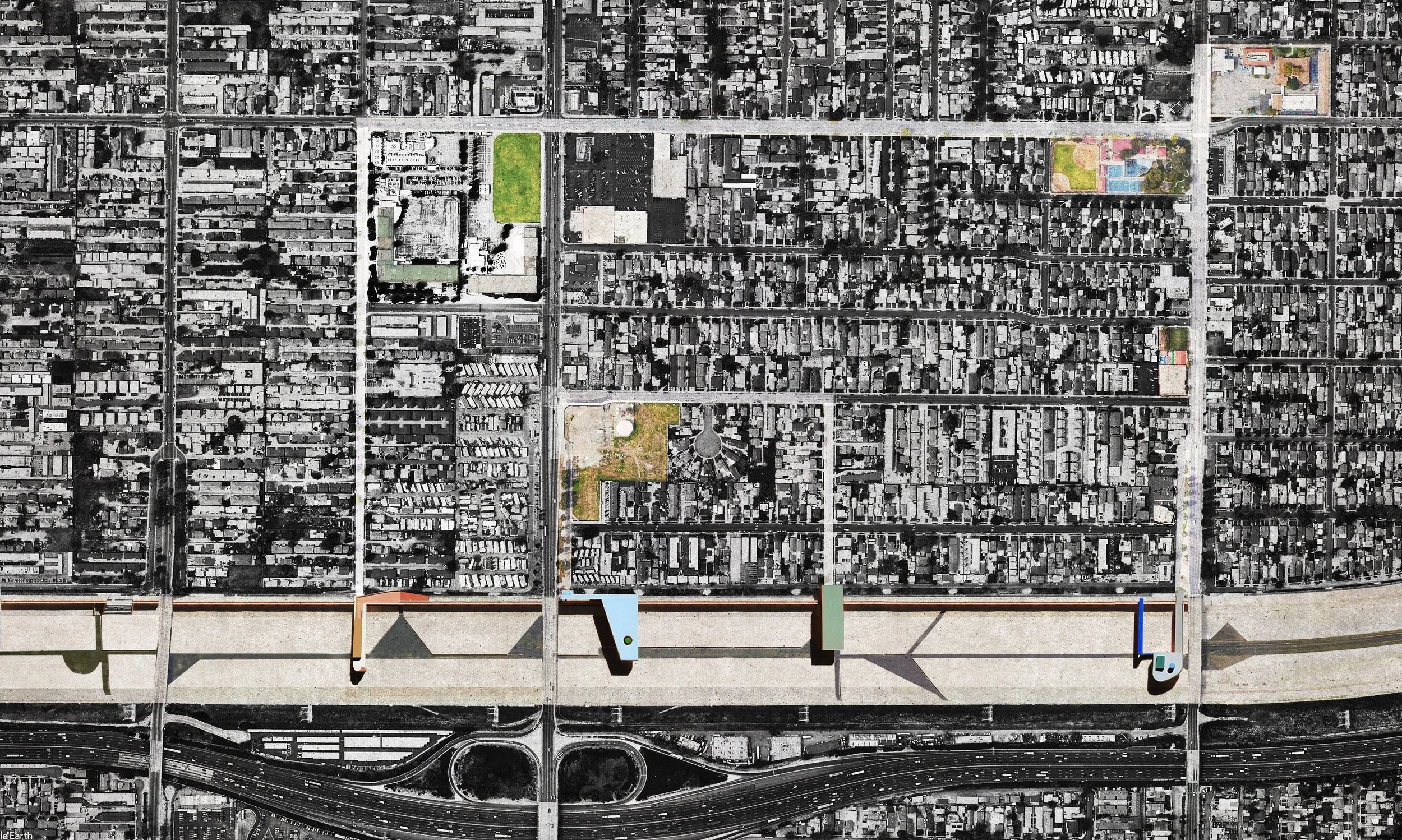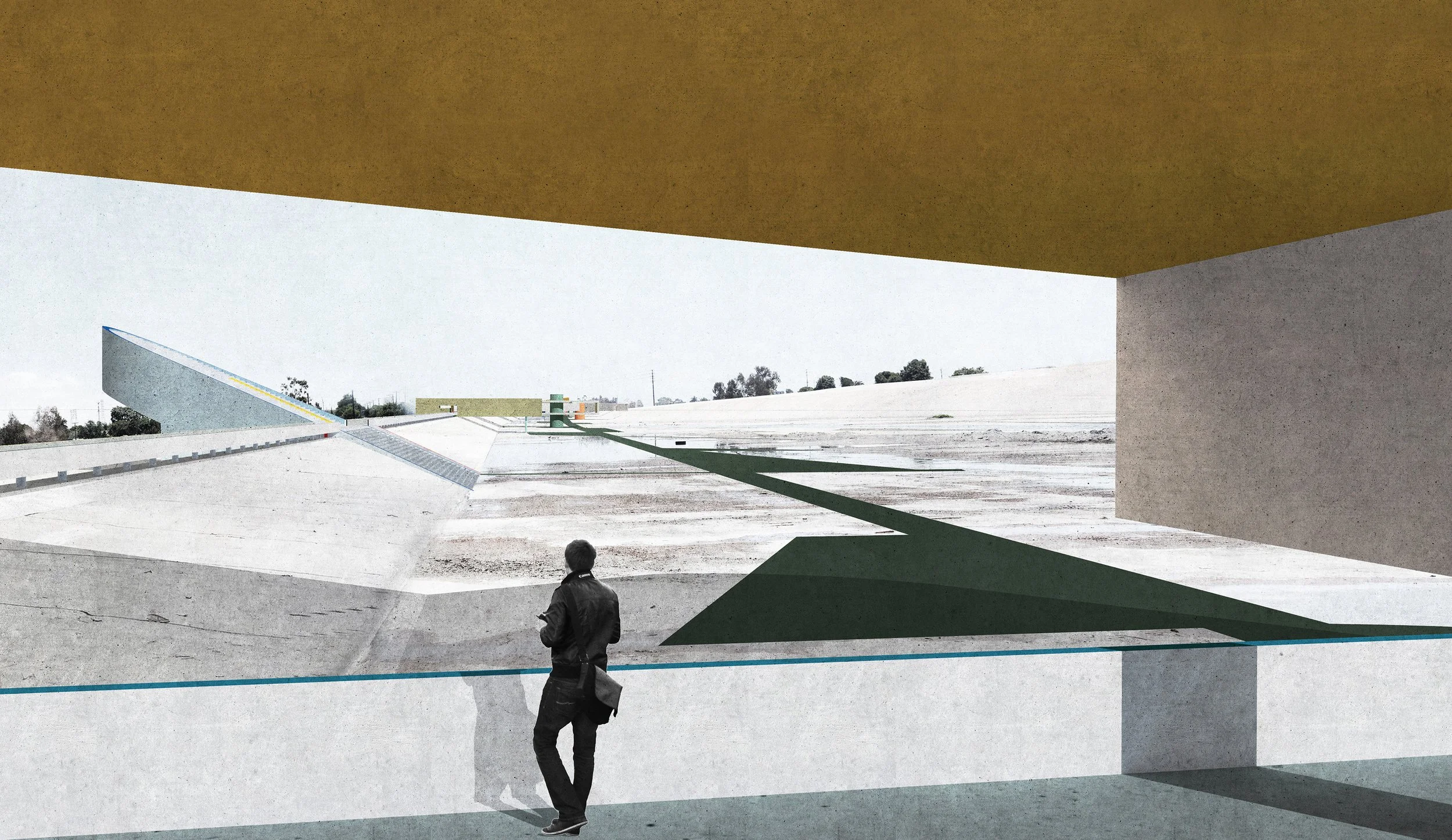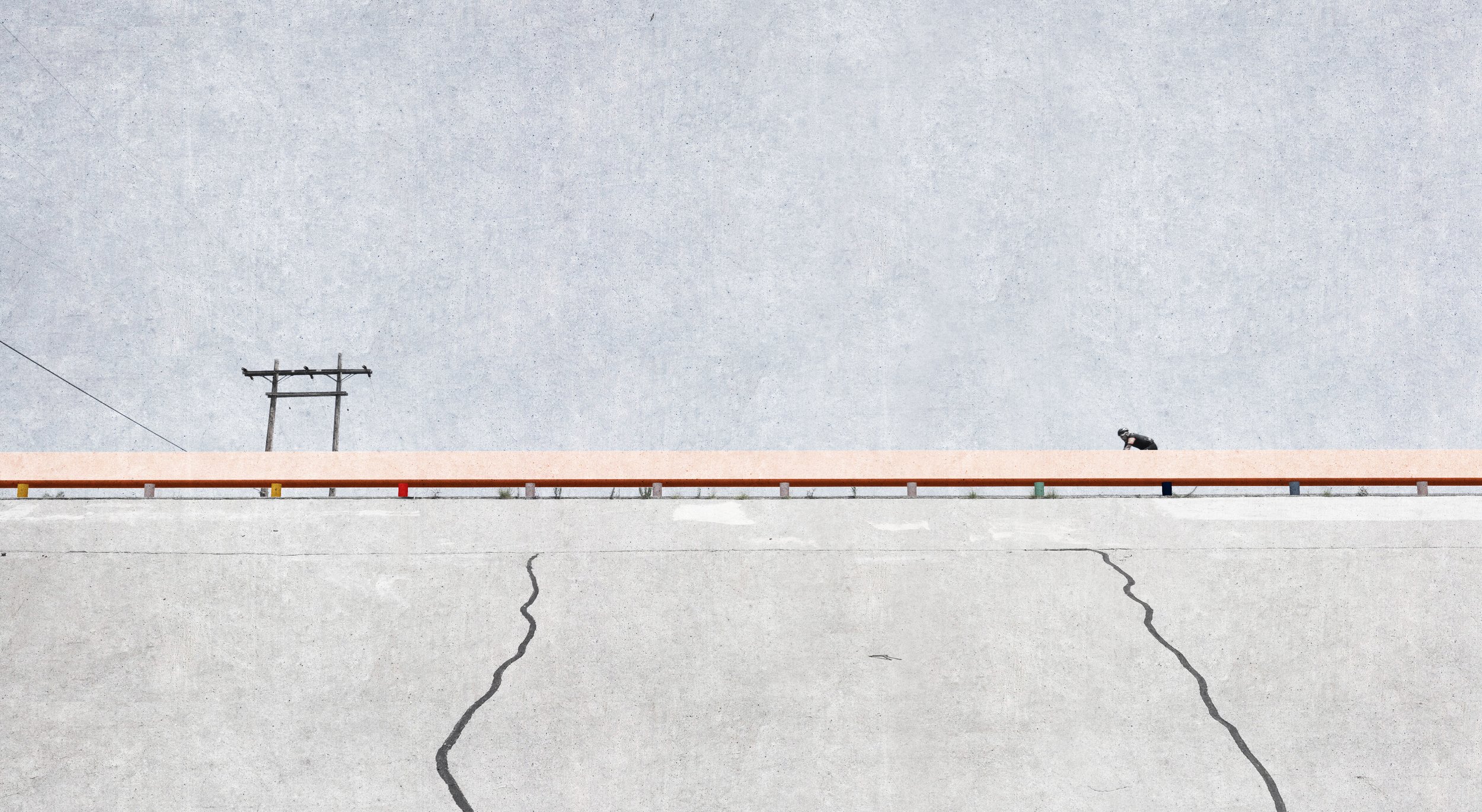
Los Angeles River
The Los Angeles River is a peculiar and unique space with tremendous urban and architectural potential for Los Angeles. While nothing more than a trickle in its original and natural form, the river currently provides an industrial and infrastructural conduit that cuts through the city from downtown LA to Long Beach. In 1939 the river was channelized by the Corps of Engineers to prevent disastrous flooding, and therefore allow stable residential development. Neither entirely natural nor manmade, the river has a liminal and sublime existence that is intimately tied to the neighborhoods that adjoin it yet is largely excluded from the urban experience of the city.
Recent efforts to reimagine the river have revolved around the idea of creating a “green zone” or linear park space within the channel, and treating the river essentially as a new “High Line”. Our proposal suggests an alternate solution based on a different reading of the river, one that considers the river as entirely indigenous to Los Angeles and seeks to harmonize it as it is with the surrounding city fabric in a site-specific way. Most importantly, the proposal does not seek to create an artificially “natural” environment within the channel nor to create a tourist destination or development opportunity.
We propose that the river, which divides many neighborhoods through the center of the city, take on the role of a civic spine. Through this spine, the neighborhoods are connected directly to the river, and through the river are linked to each other. The existing infrastructure of the river will be repurposed to provide services, amenities, and public spaces to the communities adjacent to it. Programmatically, as extensions of each neighborhood these new structures provide a chance to add space for collective activities and functions that the areas might currently be without. These might include: Indoor & outdoor pools; bath house; YMCA; school; doctor’s offices; library; cinema; day care; playgrounds; community center; non-profit organizations; museums/galleries; bike facilities/shops; restaurant/coffee shops; working spaces.
We see the river as a channel for receiving light and a conduit for wind in an otherwise hot and stifling environment. Within the space you are transported from everyday life of the city into a strangely calm, serene, and sublime place. The unnaturalness of the channel makes the experience of light, wind, sky, and water so much more vivid. As we seek to humanize and inhabit the space of the river, we want to preserve this quality.
The new structures and new walkway are subtly colored to intensify and reflect the quality of the Los Angeles light against the sky. This strategy was derived from the Ocean Park paintings of Richard Diebenkorn, in which the artist painted the colors of the air within an abstract grid of streets and built elements. Our structures, in a sense, become built manifestations of these paintings. The project becomes a three-dimensional composition of form, color and light, perceptible from the car and the pedestrian, bridging the scale of the city, infrastructure and the individual. From the car and from the eye in the sky, the channel is a linear sculpture. For the human on the ground, it creates a space to do something new, part of a linear forum connecting neighborhoods across the city.
Project Year
2020
Project Team
Manying Chen, Joe Ferdinando, Christina Xie
Aerial Photography Credit
Lane Barden
Recognition
2021 Architizer A+ Awards Jury Winner in the Unbuilt Masterplan category
2021 Architizer A+ Awards Finalist in the Architecture + Models & Rendering category
2021 Architizer A+ Awards Finalist in the Unbuilt Masterplan category
2020 Architect’s Newspaper Best of Design Awards Honorable Mention for Unbuilt Master Plan
